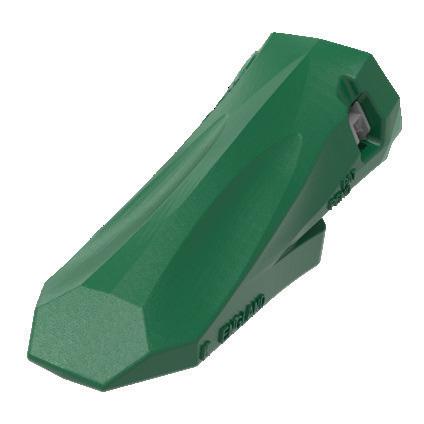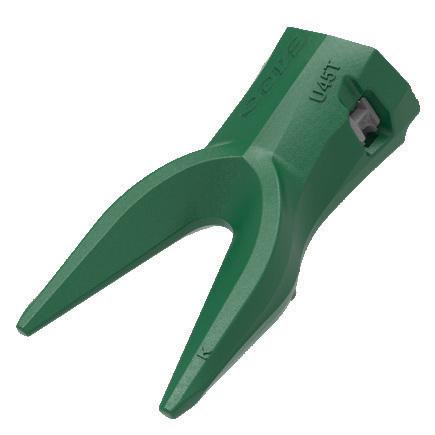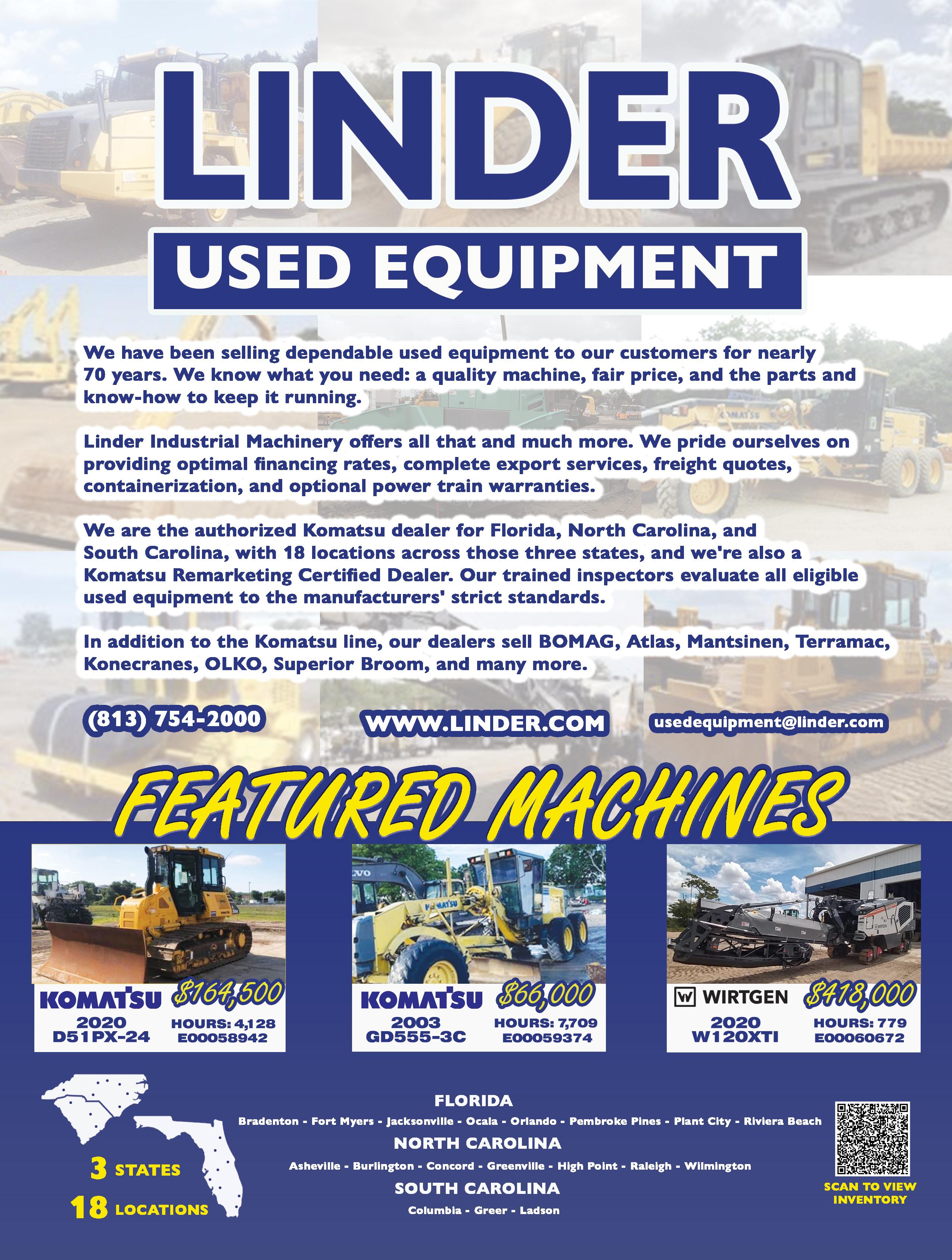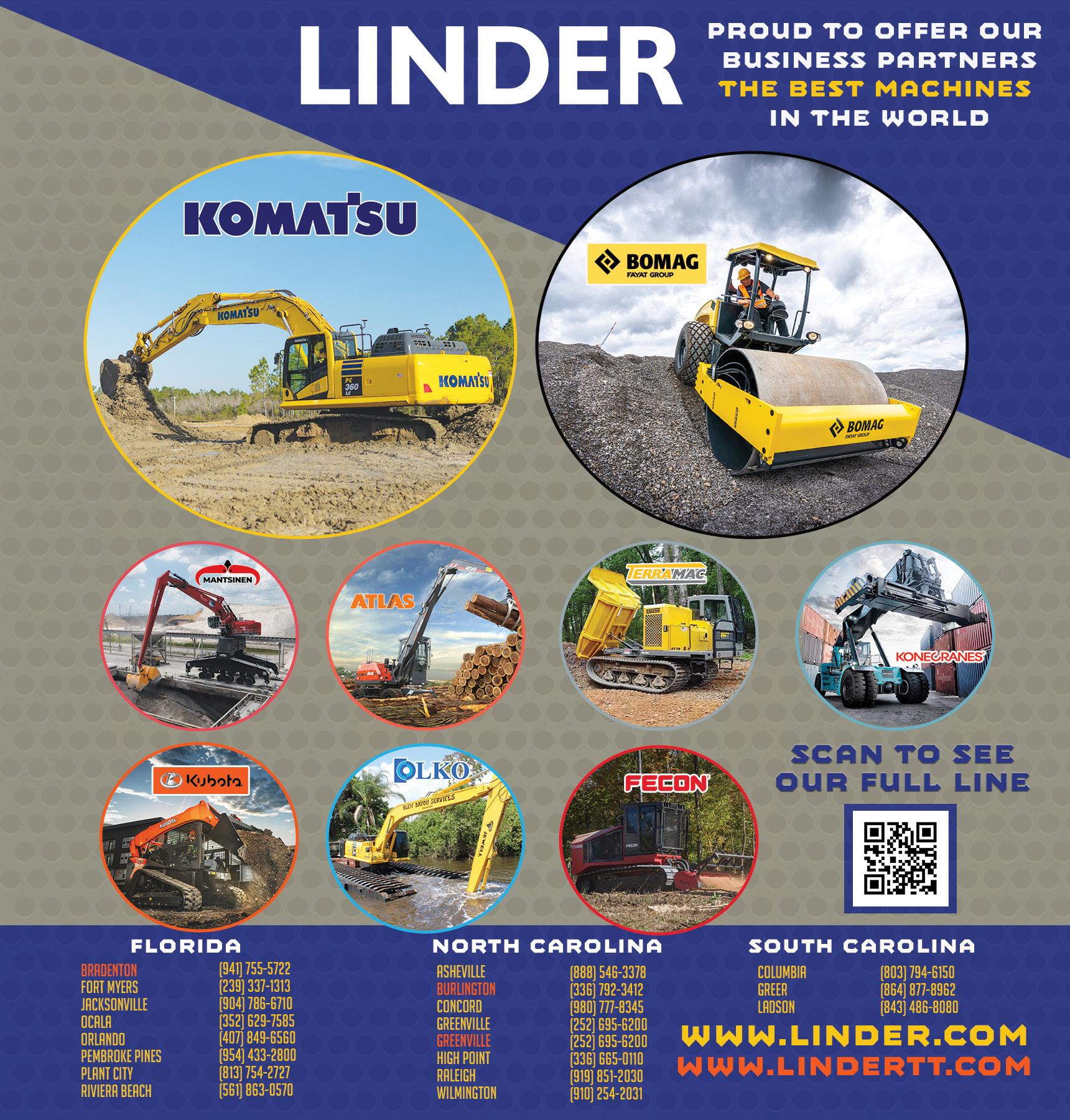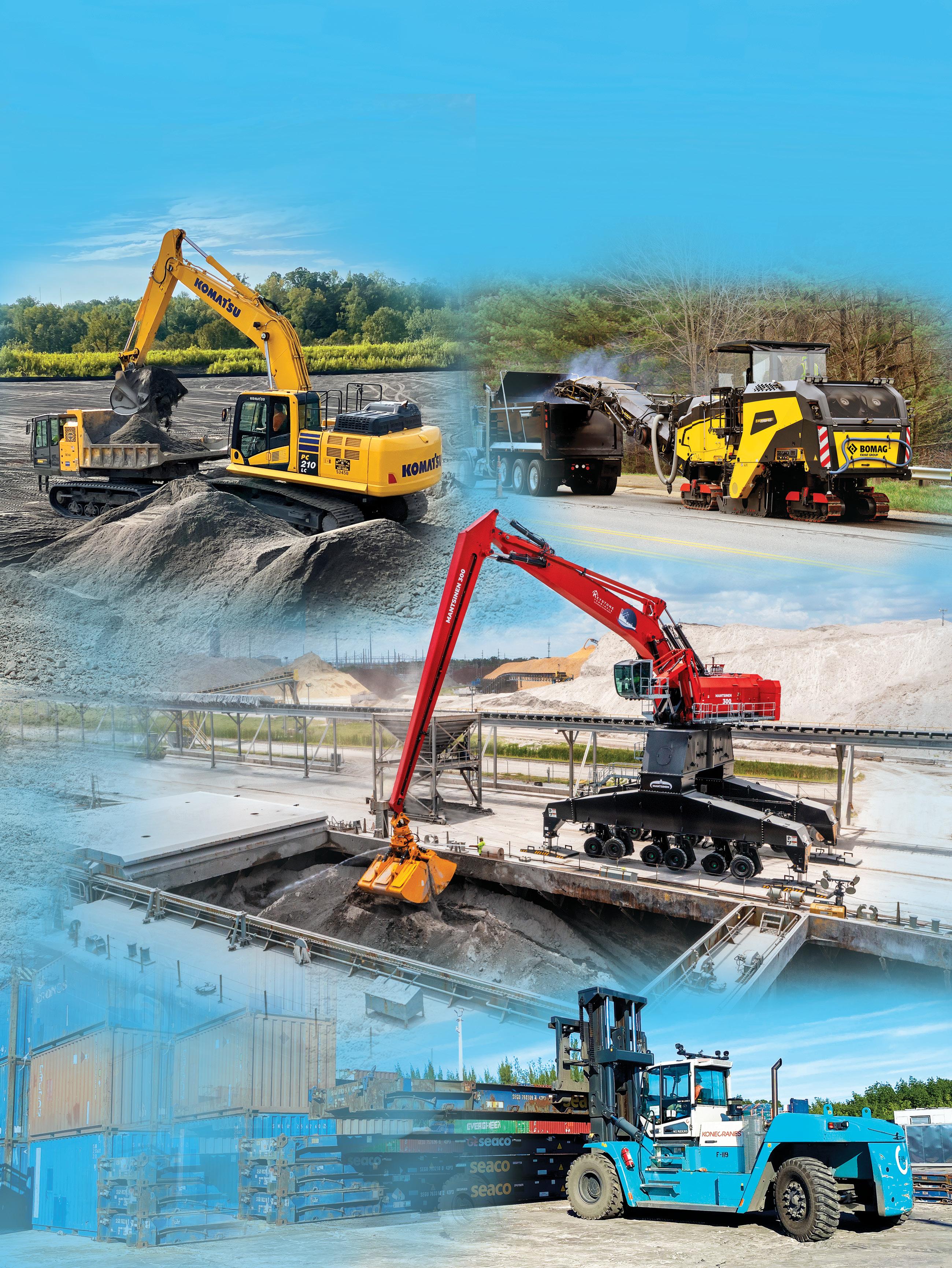

Technology is transforming the construction industry
A Message from Linder
Dear Valued Customer:

From Florida through the Carolinas, Hurricane Ian’s impact was felt by many of our customers. We hope that you all are safe and were able to quickly return to work. If you have any photos from the storm, including ones of your company helping rebuild from the damage, please let your sales representatives know. We would like to include these in an upcoming edition of Linder Link, as well as potentially feature your company for any work you are doing in the future.
We all know that high fuel prices can negatively affect profitability. Unfortunately, it does not look like those costs will fall back to their lower levels anytime soon, but there are ways to combat their rise. In this issue, we provide some helpful tips on how to reduce fuel usage.
Technology can help play a role in lowering overall costs, from fuel to moving materials. Komatsu recently introduced its latest Smart Construction solution: Smart Construction Retrofit. This indicate-only system works well with excavators that are not already equipped with GPS. Retrofit is an excellent way to upgrade your existing excavators. See inside for details.
Retrofit was one of several Smart Construction solutions recently showcased at Komatsu’s Demo Days. It was great to see the popular event’s return after a hiatus due to the pandemic. We hope you were able to attend Demo Days, but if not, we offer information on some of the featured machines.
You can also read about Komatsu's new intelligent Machine Control (iMC) 2.0 technology, which introduces additional features such as auto tilt bucket control and bucket angle hold control on several mid- to large-sized construction excavators, including the PC290LCi-11, the PC360LCi-11 and the PC390LCi-11.
As always, if there is anything we can do for you, please call one of our branch locations.
Sincerely, Linder Industrial Machinery Company
John Coughlin, President and CEO

A publication for and about Linder customers
The Products Plus The People To Serve You! In this issue
Barfield Grading Company Inc. pg. 4
See how this South Carolina firm self-performs projects.
Linder News & Notes pg. 7
Contact Linder if you need support after Hurricane Ian.
Keystone Terminals pg. 8
Discover how this Florida firm maximizes uptime.
SEACOR Island Lines LLC pg. 10
Ride along with this business as it provides shipping solutions.
Tomahawk Construction pg. 12
Control costs and maximize efficiency with Smart Construction Remote.
Certified Dealer pg. 14
Read about Linder’s new partnership with BOMAG FAYAT Group.
Serving You Better pg. 17
Learn about Linder’s new branch in Fort Myers, Fla.
Guest Opinion pg. 19
Follow these suggestions if you are new to bidding federal projects.
Fuel Facts pg. 20
Lower fuel costs even when prices are high.
Back in Action pg. 22
Get a glimpse of Komatsu’s Demo Days.
Updated Machine pg. 25
Examine BOMAG’s second-generation BM 600/15-2.
Advanced Excavation pg. 26
Take a look at Komatsu’s new iMC 2.0 excavators.
New Solution pg. 29
Check out Komatsu’s new Smart Construction Retrofit.
Tech Talk pg. 30
Integrate technology to overcome job site challenges.
Plan Ahead pg. 34
Prepare for extreme weather events.
Equipment Showcase pg. 36
Find out which Komatsu machines were featured at World of Asphalt.
Improved Fleet Management pg. 38
Access telematics data with My Komatsu.
Insider Tips pg. 41
Stay up to date on Komatsu’s new products and programs.
Linder Employee Focus pg. 43-44
Meet Linder’s featured employees.
www.Linder.com
Published for Linder Industrial Machinery Company.
© 2022 Construction Publications Inc. Printed in the USA.
Central Florida
Orlando
23 Taft Vineland Rd. Orlando, FL 32824 407-849-6560
Fax: 407-422-2342
Plant City
1601 South Frontage Rd. Plant City, FL 33563 813-754-2727
Fax: 813-754-0772
Eastern North Carolina
Greenville
1501 N Memorial Dr. Greenville, NC 27834 252-695-6200
Fax: 252-695-6205
Raleigh
6515 Chapel Hill Rd. 54 Raleigh, NC 27607 919-851-2030
Fax: 919-859-3859
Wilmington 3252 U.S. Highway 421 N Wilmington, NC 28401 910-254-2031
Fax: 910-254-2035
Western North Carolina
Asheville
575 Goldenview Rd. Asheville, NC 28804 828-681-5172
Fax: 828-684-5972
Concord
5733 Davidson Hwy. Concord, NC 28027 980-255-8345
Fax: 980-777-8378
High Point
600 Pegg Rd., Ste. 101 Greensboro, NC 27409 336-665-0110
Fax: 336-665-0525
North Florida
Jacksonville 110 Halsema Rd. South Jacksonville, FL 32220 904-786-6710
Fax: 904-781-5732
Ocala 2441 SW 57th Ave. Ocala, FL 34474 352-629-7585
Fax: 352-629-2810
South Florida
Pembroke Pines 20900 Taft St. Pembroke Pines, FL 33029 954-433-2800
Fax: 954-433-2901
Fort Myers 16878 Domestic Avenue Fort Myers, FL 33912 239-337-1313
Fax: 239-337-0134
Riviera Beach 4801 Dyer Blvd. Riviera Beach, FL 33407 561-863-0570
Fax: 561-863-0575
South Carolina
Columbia
3109 Charleston Hwy. West Columbia, SC 29172 803-794-6150
Fax: 803-739-8889
Greer 525 Old Jones Rd. Greer, SC 29651 864-877-8962
Fax: 864-877-8157
Ladson 285 Treeland Dr. Ladson, SC 29456 843-486-8080
Fax: 843-486-8090
Linder Turf & Tractor
Florida
Bradenton 5504 15th St. E Bradenton, FL 34203 941-755-5722
North Carolina Burlington
250 N Church St. Burlington, NC 27217 336-792-3412
Greenville 1501 N Memorial Dr. Greenville, NC 27834 252-695-6200
Barfield Grading Company Inc. self-performs projects throughout York County and Upstate South Carolina
SSome of Alan Barfield’s earliest memories are of visiting job sites with his grandfather.
By watching the business and occasionally operating motor graders, he developed a love for construction that would lead to a lifelong career in the industry. In 1988, Alan established his own construction firm, Barfield Grading Company Inc., in Fort Mill, S.C.
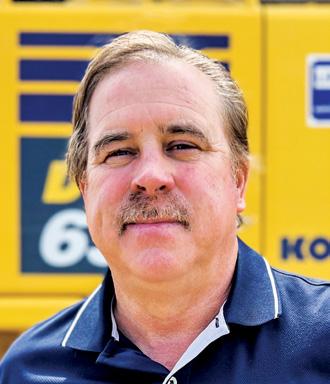
“I started out with one dump truck and one piece of equipment that I would run part time, and then I hired somebody to run the machine full time for me,” recalled Alan. “In ‘88, I committed full time to the business. We would do everything from lot clearing to debris cleanup and small hauling. We didn’t say no to anybody.”
Alan’s work ethic led to projects with the town of Fort Mill, and the company started to grow. In an unfortunate turn of events, Hurricane Hugo hit in 1989, but once Barfield Grading found stable footing, it began bidding projects and adding employees. Over the past 34 years, the company has weathered multiple economic storms and currently employs approximately 70 people. In addition to Barfield Grading, Alan owns and operates Creekside of York County Inc. — a Class 1 landfill — and two dirt pits. He also leases a third dirt pit. The company uses more than 20 dump trucks to supply material from the pits directly to customers.
Alan appreciates his diverse group of employees, many of whom have been with
Barfield Grading has approximately 35 Komatsu machines, including this PC350LC excavator. “One of the main reasons we continue to utilize Komatsu machines in our fleet is their reliability,” stated Alan Barfield, president. “We’ve had our two PC350s for approximately eight years. … We use them to load articulated trucks, excavate rock, excavate overburden, and lay storm drain. They’re very versatile.”
the company for over 20 years. Key people include Project Manager A.J. Barfield (Alan’s son), Pit Manager Warren Moss, Head Estimator Dwayne Jordan, Superintendent Barry Fuller, Superintendent Miguel Gonzalez, Grade Foreman Curt Calhoun, Office Manager Peyton Clark, Safety Director Chase Moss, Heavy Equipment Manager Ricky Bolin, and Truck Mechanic Whitney Long.
“Our employees play a pivotal role in our success today,” stated Alan. “We primarily specialize in mass grading, storm drain, site prep, landfill, schools, and subdivisions throughout York County and Upstate South Carolina.”
A.J. added, “Nine times out of 10, we self-perform all aspects of the job, including erosion control, clearing, grading and storm drain. That allows us to stay on schedule and deliver a high-quality product for our clients.”
Reliable, versatile machines
Currently, the firm is completing work at Meadows of Manchester Park, which is a multifamily subdivision. The two-year project primarily involves moving mass quantities of dirt.
“We were brought on-site to move 150,000 to 160,000 yards of cut to fill,” explained Alan. “We also moved 200,000 yards of rock, including topsoil stripping. We crushed the rock and put it back in the fill areas to create some cost savings. When we’re finished around the end of the year, we’ll have all of the lots and roads to subgrade.”
To keep its jobs on schedule, Barfield Grading depends on its fleet of about 35 Komatsu machines, including two PC350 excavators.

“One of the main reasons we continue to utilize Komatsu machines in our fleet is their reliability,” stated Alan. “We’ve had our two PC350s for approximately eight years. They probably have close to 8,000 hours on them, and we’ve spent very little on maintenance over the years. We use them to load articulated trucks, excavate rock, excavate overburden, and lay storm drain. They’re very versatile.”
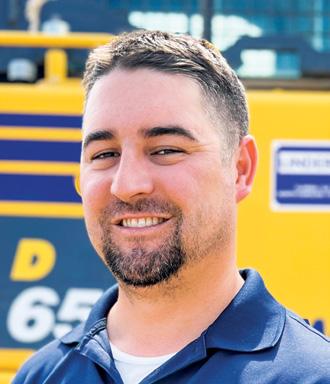
The firm recently added a Komatsu PC490LC excavator and several Komatsu D65PX dozers to its fleet.
“We use the PC490 to excavate overburden and the shot rock out of the ground, and the
D65s to keep stockpiles pushed up and the rip rock, if necessary,” noted Alan. “The D65 is a strong machine that’s easy to move around and versatile. The PC490 breakout force, bucket size and cycle time make it an efficient tool for our operators. What’s been key from our Komatsu equipment is the uptime. We can’t afford to have machines sitting, which is why we prefer Komatsu.”
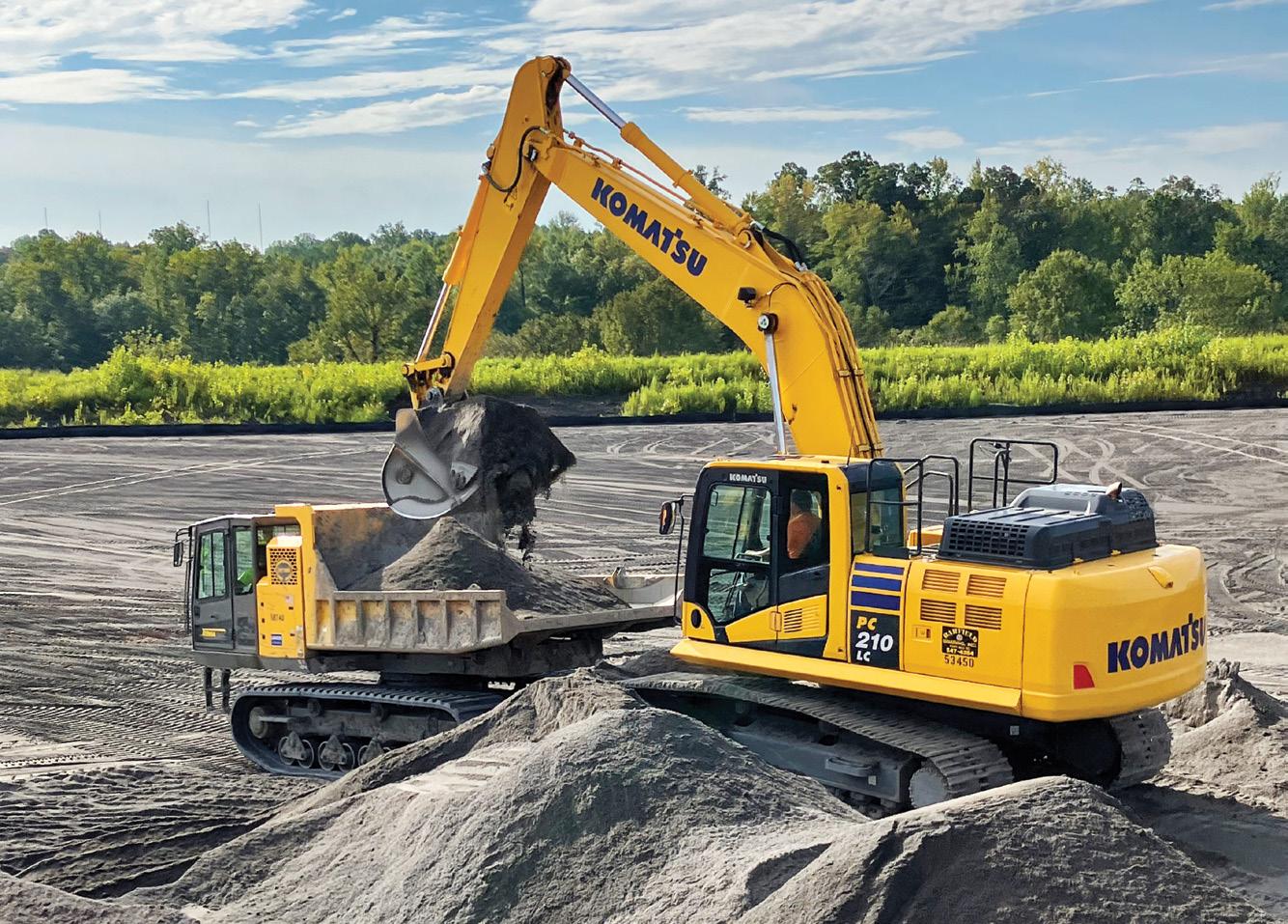
“We recently bought a brand-new PC240 excavator, and I can run that all day without getting tired,” added A.J. “Air conditioning, smooth, quiet — you can’t ask for anything better. When we bought 50 acres of property, we used the 240 to clear the land, stack the brush, and for stumping. It’s perfect for what we’re doing with it.”
At a separate job site, Barfield Grading utilizes several Terramac RT14R rotating rubber-tracked crawler carriers.
“We’re operating around a pond and moving through wet material that would bog down a traditional rubber-tired truck,” explained Alan. “The Terramacs allow us to move in a straight line then rotate the bed without turning the machine to deposit material. You can access the areas you need to get to without tearing up the land or disturbing the habitat.”
Additionally, the firm uses Komatsu D39PX and D61PX dozers to push material.

Near a pond, Barfield Grading pairs a Komatsu PC210LC excavator with a Terramac RT14R rotating rubber-tracked crawler carrier to efficiently transport material. “The Terramacs allow us to move in a straight line then rotate the bed without turning the machine to deposit material,” explained Alan Barfield, president. “You can access the areas you need to get to without tearing up the land or disturbing the habitat.”
Indispensable support from Linder

To find the right machines for its fleet, Alan works closely with Linder Industrial Machinery Company, including sales representative Bill Cross.
 With a Komatsu PC360LC excavator, an operator loads dirt into the bed of a haul truck at one of Barfield Grading’s dirt pits.
With a Komatsu PC360LC excavator, an operator loads dirt into the bed of a haul truck at one of Barfield Grading’s dirt pits.
‘I enjoy that every day is different’
“We’ve utilized Komatsu equipment since the ‘90s,” noted Alan. “We’ve worked with Bill and Linder for at least 10 years and appreciate the support they provide us. Bill is great about answering his phone and making sure our questions are answered quickly.”
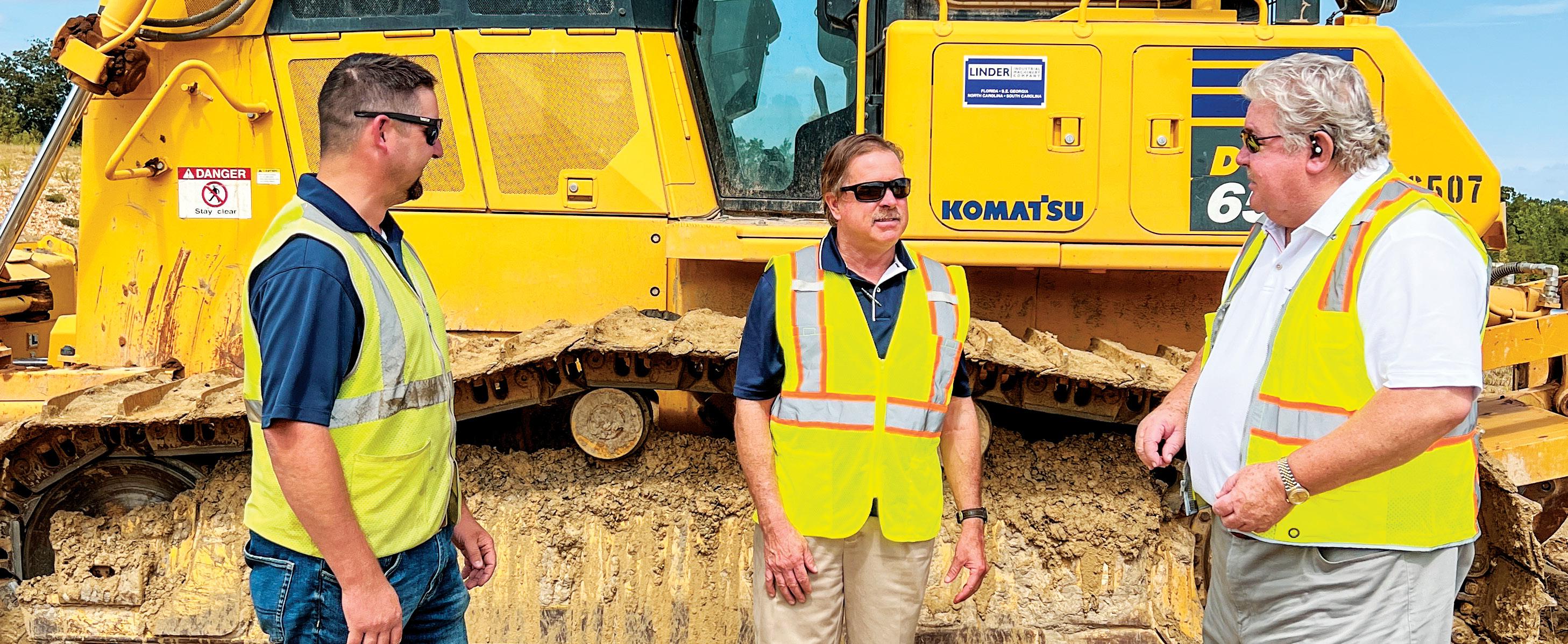
Scott McAteer, a product support representative for Linder, also assists Barfield Grading.
“Because we’re located an hour from Linder’s facility, Scott has been indispensable to us as well,” said Alan. “He lives in York County and will deliver parts or swing by our shop when needed to save us the trip. It says a lot when you have somebody willing to go out of their way to support you.”
“Even though Linder is a larger company, they continue to treat us as a priority and not just another customer,” added A.J. “We use their rental department all the time, and they’re great to deal with.”
In his father’s footsteps
Moving forward, Alan plans to keep providing quality work to customers and grow with demand. He also wants to slowly reduce his role in the company as A.J. moves into a leadership position.
An operator lifts material with a Komatsu PC490LC excavator.

Barfield Grading recently added a Komatsu D61PX dozer to its fleet.

“At the end of the day all you’ve got is your friends and your work,” reflected Alan. “You need to have good honest work. A hard day’s work still pays off.”
A.J. is excited for the opportunity to continue in his father’s footsteps and provide quality jobs for local workers.
“I enjoy that every day is different,” said A.J. “You can’t learn everything from a book, and I’d probably say 80% of what I know came from being out here in the field. Being able to do it on your own and solve problems is where it really counts.” ■
(L-R) Project Manager A.J. Barfield and President Alan Barfield talk to Bill Cross, their Linder sales representative. “We’ve utilized Komatsu equipment since the ‘90s,” noted Alan. “We’ve worked with Bill and Linder for at least 10 years and appreciate the support they provide us.”Are you helping your local community clean up after Hurricane Ian?
HHurricane Ian had a devastating impact on coastal South Carolina and along Florida’s Gulf Coast, particularly in the Fort Myers area. Many of our customers were impacted directly and indirectly by the storm, and we hope you all are safe. If there is any support you need, please reach out to your sales representative or local branch, and we will do whatever we can to help your company.
To any of our customers who are cleaning up debris or repairing damages caused by Hurricane Ian, we would like to feature you in an upcoming Linder Link magazine. We believe it is important to show that in the wake of devastation our customers are directly involved in rebuilding the community stronger than before. While the work will not be easy, it is important for people to see the recovery process.

There is no requirement for the size or scope of work we are looking for because anything from removing fallen branches in low-impact neighborhoods to loading scrap from damaged homes into haul trucks paints a picture of community. Again, we hope you all remain safe, and we appreciate all of your hard work. ■

In September, Hurricane Ian caused catastrophic damage in Florida and South Carolina.

The Category 4 hurricane flooded homes and streets, and it knocked out electricity to 2.6 million Florida homes and businesses.

Keystone Terminals utilizes Mantsinen’s largest material handler in the Americas to maximize uptime
KKeystone Terminals, located in Jacksonville, Fla., recently added a Mantsinen 300 material handler to its fleet. Weighing 870,000 pounds and standing nearly six stories tall, it is Mantsinen’s largest machine in the Americas.
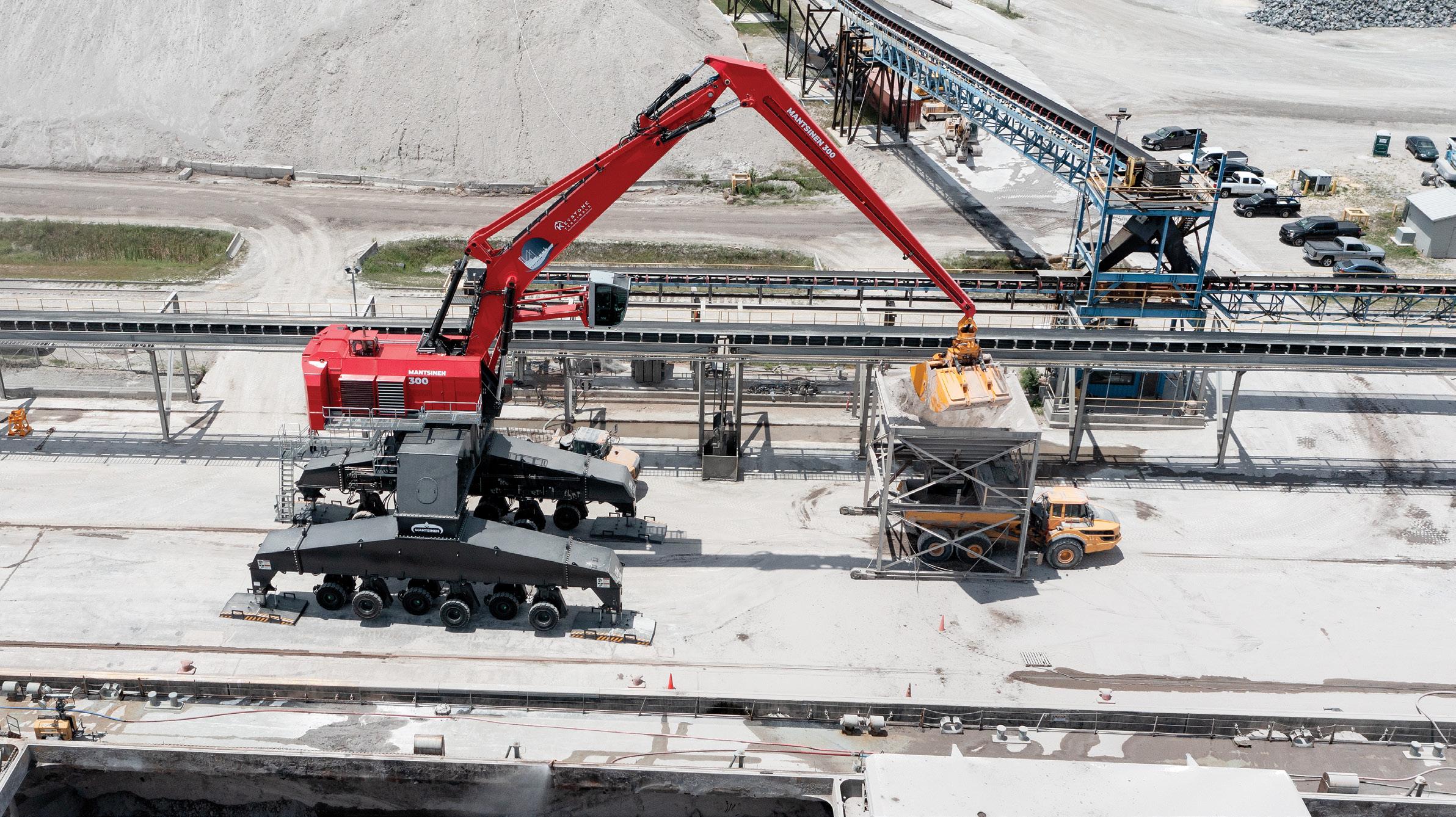
“We equipped the Mantsinen with a 24-yard clam to unload sand, stone and other aggregates,” said Tim Hyland, vice president, SMH Group. “It’s a rubber-tire machine, which allows the operator to easily move along the port and access different sections of a ship. When unloading barges, the Mantsinen deposits aggregates into multiple primary and surge hoppers before the material is trucked around the port.”
The Mantsinen 300 replaces two cable cranes with 14-yard clams, increasing efficiency and maneuverability. Because barges can arrive at any time, the machine will be ready to work 24/7.
“The machine’s efficiency handling material greatly reduces the cost of ownership compared to a cable-crane system,” noted Hyland. “It has faster cycle times and opens opportunities for
different vessels and products to unload at the port. Eventually, Keystone Terminals will be able to lift heavier goods as well.”
Partnering with Linder and SMH Group
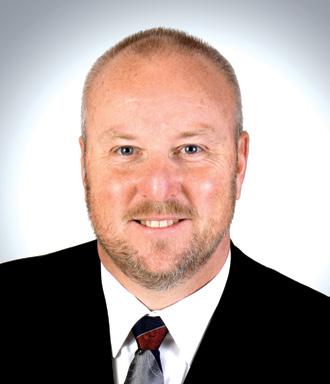
Keystone Terminals worked closely with Linder, SMH Group and Mantsinen to design the right material handler for its port, from the best cab and undercarriage to the proper boom and stick.
“One of the key steps was getting the dimensions of the port and the dimensions of the vessels they’re unloading,” explained Hyland. “We combined that information using Mantsinen’s software to create a rendering and prototype of the ideal-sized machine loading and unloading vessels at high tide and low tide. That provided Keystone a good example of what the Mantsinen 300 would be able to do for them.”
Instead of assembling the machine at the terminal, Keystone Terminals worked directly with Mantsinen, Linder, SMH Group and UTC Overseas to ship the fully assembled machine from Finland to Florida.
Keystone Terminals recently added a Mantsinen 300 material handler to its fleet. Weighing 870,000 pounds and standing nearly six stories tall, it is Mantsinen’s largest machine in the Americas.
Discover more at TheLinderLink.com Tim Hyland, vice president, SMH Group“Typically, with a machine this size, it would be shipped in pieces and take upwards of four weeks to assemble and test,” explained Hyland. “We were able to work with multiple companies to assemble, load, ship, unload and test the machine and have it ready to unload barges within a couple days of arrival at the port.”
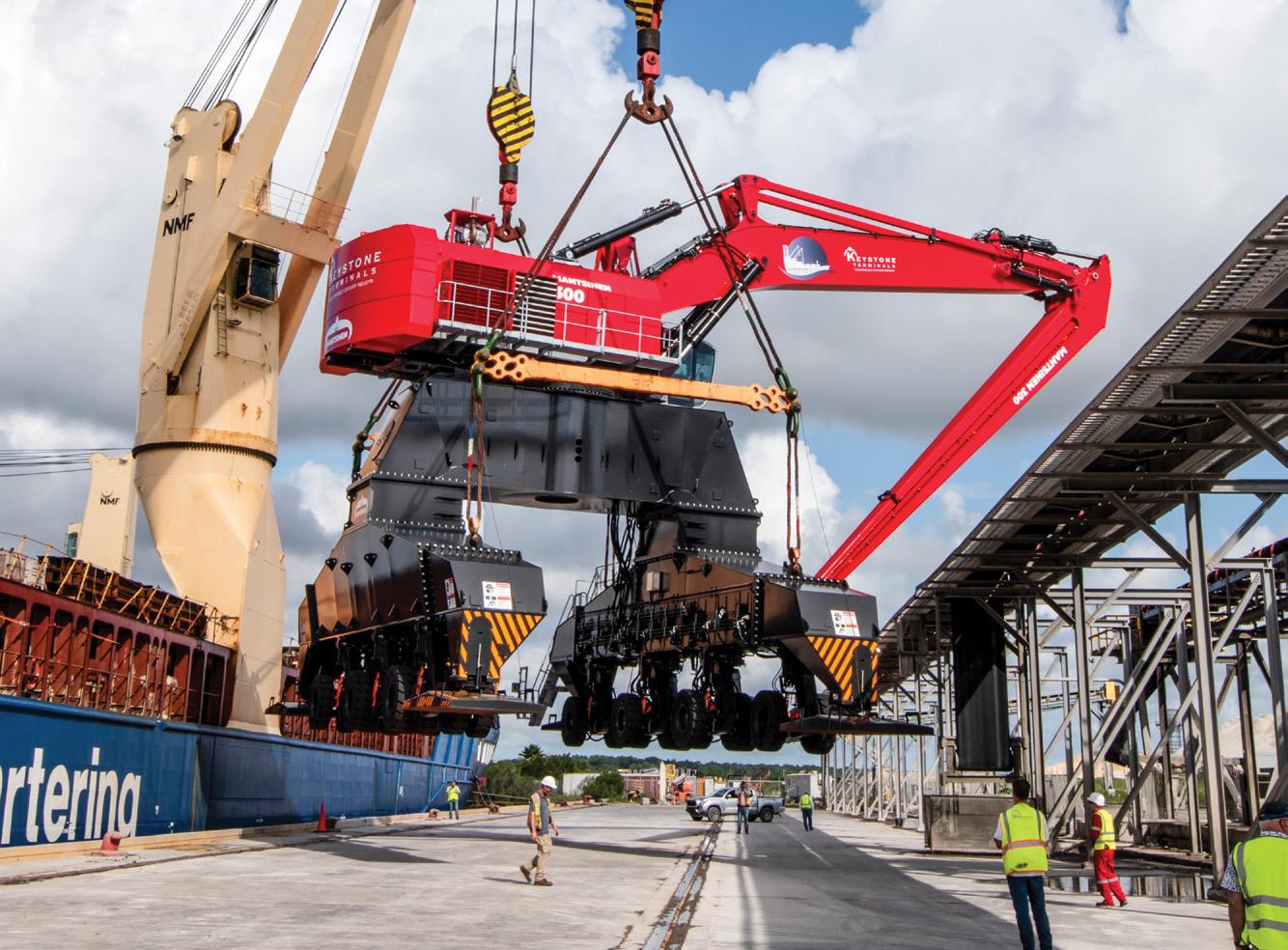
After the machine arrived, Linder and Mantsinen spent three days providing technical training for Keystone Terminals’ mechanics, as well as two days training its operators. Linder will continue to provide parts and service support for the machine moving forward.
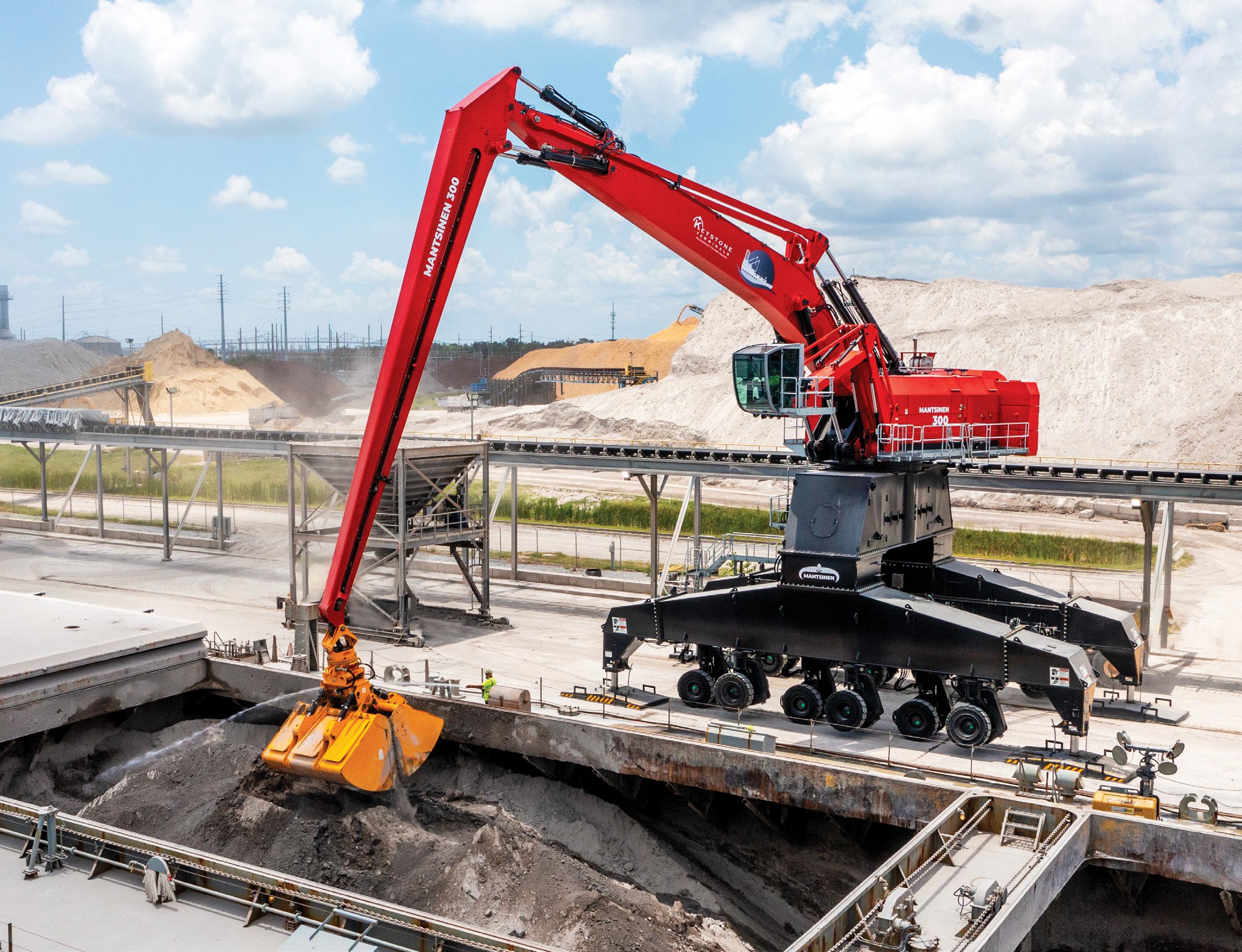
“Linder placed a 40-foot container with spare parts on the property before the machine arrived to make sure they could take care of any service needs 24/7,” stated Hyland. “Linder also has a surplus of parts at the Jacksonville store and triplicates at the SMH Group offices in Charlotte (North Carolina). Our goal is to provide support that allows this machine to maximize uptime and increase Keystone Terminals’ capabilities.”

Florida-based SEACOR Island Lines LLC utilizes Konecranes forklifts to efficiently handle a variety of cargo



SSEACOR Island Lines LLC provides shipping solutions between Fort Lauderdale, Fla., the Bahamas, and Turks and Caicos Islands. Its fleet of nine specialized vessels provides unique cargo transportation and logistics solutions. To handle the variety of cargo — ranging from pallets and containers to heavy machinery — the firm utilizes a Konecranes SMV 16-1200 C forklift that has a 36,000-pound capacity and a Konecranes SMV 32-1200 C forklift that has a 72,000-pound capacity.
“We call our smaller machine Baby Blue and the other machine Big Blue,” commented Bill Peters, director of maintenance for SEACOR Island Lines. “We primarily utilize Big Blue at our terminal to handle our unusual cargo and Baby Blue handles a variety of lighter material in our yard. So far, they’ve been reliable machines, which is essential for us.”
The SMV 16-1200 C forklift is a recent addition to SEACOR Island Lines’ fleet.
“Our operators run the machine 24/7,” stated Peters. “Inside the cab is like flying an airplane with all the technology available. You’ve got air conditioning, power steering and joystick controls that put all the switches at your fingertips.
“Whatever we need Baby Blue to do, it does — without any problems,” continued Peters. “It’s snug quarters in the yard, and the machine’s tight turning radius allows us to get in and out of locations without additional equipment. Great visibility from the cab allows the operator to see what’s going on around them at any time, keeping them and everyone else safer. Ultimately, the machine saves us time and money.”
The SMV 32-1200 C is an efficient alternative for moving heavier cargo without a crane.
“If we’re shipping a small dozer and need to put it on a flat rack, instead of bringing out a crane, Big Blue can scoop it and place it quickly,” explained Peters. “The machine is stable and has excellent power and lifting capacity without sacrificing maneuverability or fuel efficiency. If we can’t pick something up with a top pick, Big Blue handles it.”
Support from Linder
When deciding on which equipment to add to its fleet, Peters worked closely with Linder Industrial Machinery Company sales representative Carlos E. Gomez to find the right Konecranes machines. Peters notes
At SEACOR Island Lines’ port, an operator lifts flat racks with a Konecranes SMV 32-1200 C forklift. “The machine is stable and has excellent power and lifting capacity without sacrificing maneuverability or fuel efficiency,” said Bill Peters, director of maintenance. Discover more at TheLinderLink.com Bill Peters, director of maintenanceAn operator moves flat racks at SEACOR Island Lines’ yard with a Konecranes SMV 16-1200 C forklift. “It’s snug quarters in the yard, and the machine’s tight turning radius allows us to get in and out of locations without additional equipment,” said Bill Peters, director of maintenance. “Great visibility from the cab allows the operator to see what’s going on around them at any time, keeping them and everyone else safer.”
that the support from Linder after adding the equipment played an important role in their purchasing decision.
“Our Konecranes machines come with a great service representative and a serviceability record that can’t be beat,” noted Peters. “We received regular updates through Linder from the time we ordered the SMV 16 to the time it was delivered. Once the machine arrived, Linder sent out their forklift techs to follow up with our operators and make sure they were comfortable with the machine’s capabilities.

“If I have any questions about either machine, I know I can call Carlos, and he’ll get me an answer,” continued Peters. “We’ve had virtually no problems with either machine, and if there is something minor that comes up, Linder sends out a tech the same day with the part we need. It’s evident in the support that Linder provides that they believe in the quality of the machines as much as we’ve seen that quality save us money on the bottom line.” ■

(L-R) Linder sales representative Carlos E. Gomez helps Bill Peters, director of maintenance for SEACOR Island Lines, find the right machines for the shipping company’s operations. “Our Konecranes machines come with a great service representative and a serviceability record that can’t be beat,” noted Peters. “If I have any questions about either machine, I know I can call Carlos, and he’ll get me an answer.”

Tomahawk Construction utilizes Komatsu’s Smart Construction Remote to control costs and maximize efficiency
 Randall Hendra, project surveyor
Randall Hendra, project surveyor

SSince 2004, Tomahawk Construction has established itself as a premier site development firm in Fort Myers, Fla. A mix of private, commercial and Department of Transportation (DOT) work keeps its approximately 90 employees busy year-round. In 2014, Tomahawk Construction hired Randall Hendra to oversee its surveying operations.
“I had my own surveying company and saw early on how GPS technology cut into my traditional role of surveying and staking sites,” said Hendra. “Instead of fighting change, I decided to learn what GPS could accomplish. Since joining Tomahawk, we’ve transitioned from staking jobs to utilizing GPS technology for all of our projects.”
With multiple active job sites spread across the greater Fort Myers area, Hendra is constantly monitoring job site progression. He relies on Komatsu’s Smart Construction Remote — a software system that allows you to transfer files, support operators and locate machines from your computer — to work efficiently and keep projects on schedule.
“We do a lot of subdivision work, which means plans are continuously updating and changing
throughout the build,” noted Hendra. “The demand for housing in the area means we’re out the door and on the ground digging lakes and ponds before the plans are 100% finalized. With Smart Construction Remote, I’m able to update changes to our models and remotely send them to our GPS-equipped Komatsu machines without having to separately drive to each machine and install the file with a thumb drive.
“As soon as I upload the file to the machines, the operator can see the new plans and get to work,” continued Hendra. “It’s a huge time saver because I’m not driving an hour to each job site and tracking down each machine — it’s just the stroke of a key, and I’ve saved myself half a day of work. From the operator’s perspective, they’re not wasting half a day following plans that have already changed. You can see how the cost savings and efficiency quickly build when you have multiple changes throughout the life of a project.”
Expanding equipment

Tomahawk Construction currently utilizes approximately 10 Komatsu intelligent Machine Control (iMC) dozers and excavators.
A Tomahawk Construction operator cuts a road in the early stages of a project with a Komatsu D51PXi-24 iMC dozer. “Nothing works as well as Komatsu,” said Randall Hendra, project surveyor. “With Smart Construction Remote, I’m able to update changes to our models and remotely send them to our GPS-equipped Komatsu machines without having to separately drive to each machine and install the file with a thumb drive.”
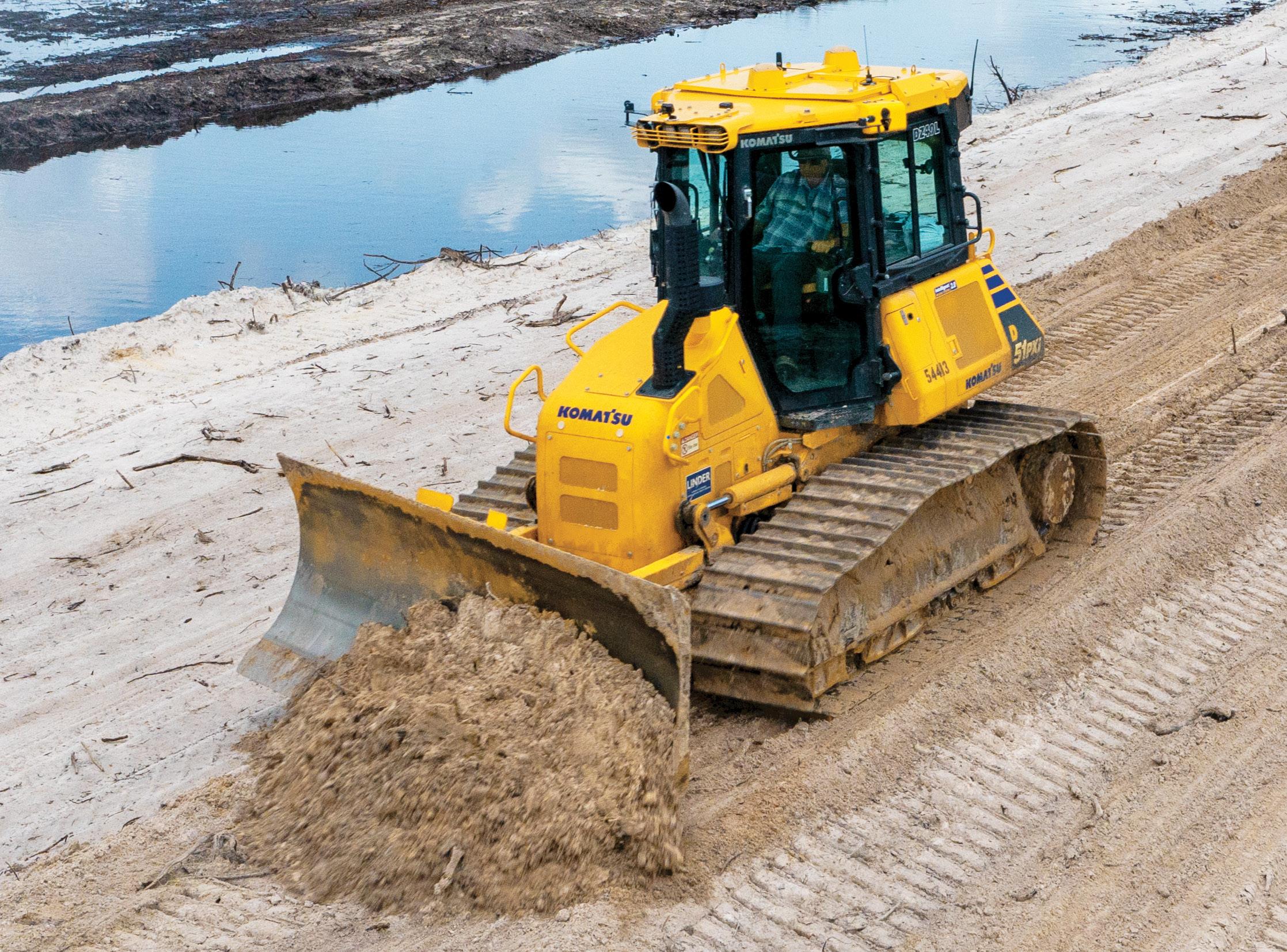
Project Surveyor Randall Hendra monitors Tomahawk Construction’s Komatsu iMC machines as well as its Topcon-equipped machines from his desk with Smart Construction Remote. “Between tracking machines, uploading files and remotely supporting our operators, Smart Construction Remote paired with Komatsu iMC equipment has greatly increased our efficiency,” said Hendra.
Soon, the firm will have about 30 machines capable of utilizing Smart Construction Remote because it works on Topcon systems as well as iMC machines.
“We’ve tried other brands of GPS-equipped machines, and nothing works as well as Komatsu,” stated Hendra. “You don’t have to fix cables or masts, or make little adjustments — you just set the dozer up, and it runs. You’re also able to track where your machines are located, which impacts everything from efficiently moving machines between jobs to helping technicians locate machines for routine maintenance.”
Operator support
When an operator has a question about a project, Hendra can often use multiple Smart Construction Remote capabilities to resolve the problem quickly.

“Through Smart Construction Remote, I’m able to see on the monitor in my office exactly

what an operator sees on the screen in their cab,” explained Hendra. “If an operator calls and explains that he’s grading a road and it’s not a 2% cross slope, I’m able to see what his screen shows and see exactly where he is located on the job site. I can take that information and compare it to the model, make any changes, then upload a new model to the machine with the proper cross slope without leaving my desk.”
Hendra added, “I can also control the screen for any machine. If an operator gets into a different machine than they typically run and wants the screens to look a specific way, I can remotely adjust that for them. I can also update menus and delete old files to make sure our operators are using the most up-to-date version. Between tracking machines, uploading files and remotely supporting our operators, Smart Construction Remote paired with Komatsu iMC equipment has greatly increased our efficiency.” ■
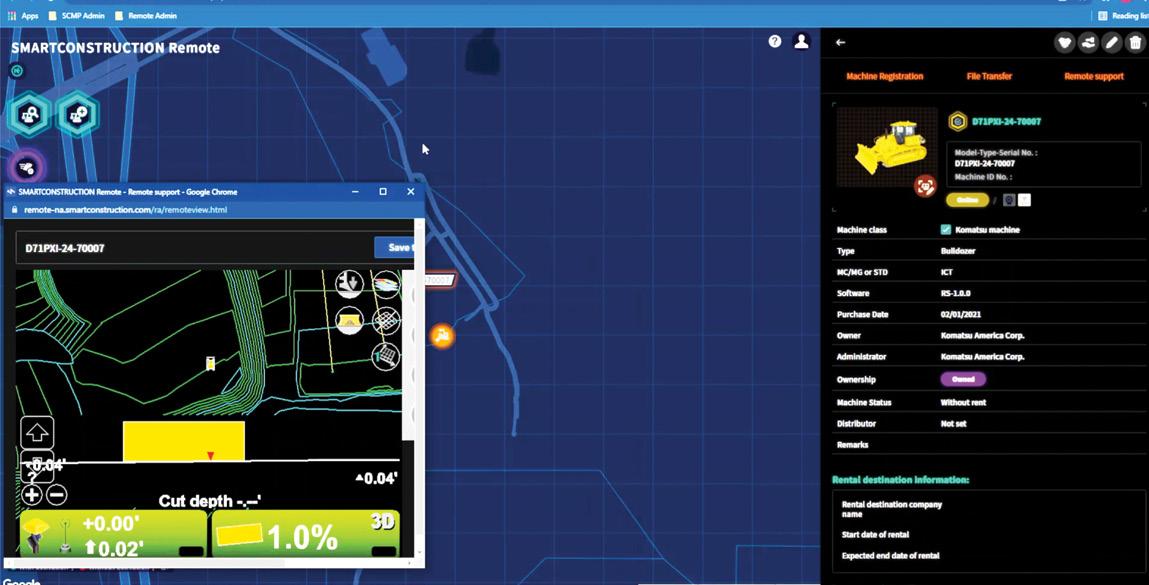 Discover more at TheLinderLink.com
Discover more at TheLinderLink.com
Certified Dealer
Linder announces partnership with BOMAG FAYAT Group, expands equipment lineup
IIn 2022, Linder Industrial Machinery Company announced a new partnership with BOMAG FAYAT Group, which means Linder’s distributor networks in Florida, North Carolina and South Carolina are now certified BOMAG dealers.
“The opportunity arose earlier this year to partner with Linder, and we couldn’t be more excited,” stated Rob Mueckler, president of BOMAG Americas Inc. “Linder’s reputation as a distributor and commitment to the road
sector made them a good fit to represent our brand. Their representation in the Carolinas and Florida will further enhance our presence in all three states.”
“We are excited to team up with BOMAG,” stated Gino Morin, vice president of corporate sales for Linder. “Their paving, compaction, milling and stabilizing lines are top notch. BOMAG’s innovation continues to impress as they add transformative technology and make operation safer and more productive for our customers.”
Mueckler adds that Linder’s reputation for customer service is a key piece of the partnership and commented, “Linder goes to market with knowledgeable salespeople on the front end that are supported by product specialists and service specialists for their niche product segments. BOMAG brings its own product specialists, application specialists, and a strong commitment to parts and service support that complements the values and support Linder already provides. Because roadwork never stops, our partnership with Linder means that our customers receive 24/7 support to help them complete their projects on time and on budget.”
John Coughlin, president and CEO of Linder, echoes Mueckler’s sentiment.
“Road building is a 24-hours-a-day, 7-days-a-week, 365-days-a-year business building and maintaining vital infrastructure for our country,” stated Coughlin. “You must be armed, trained and ready to go at any time of the day to support your customers in that industry. We’ve built up the internal framework over the last two decades to provide around-the-clock support with technicians, parts people and managers on call that will answer the phone and take care of our customers day or night.”
Coughlin notes that Linder’s partnership with BOMAG will also benefit its material handling and landfill compaction industries.
Linder’s distributor networks in Florida, North Carolina and South Carolina are now certified BOMAG dealers. “Linder’s reputation as a distributor and commitment to the road sector made them a good fit to represent our brand," said Rob Mueckler, president of BOMAG Americas.
“The quality and technology built into the BOMAG rollers separates them from the competition,” said Coughlin.
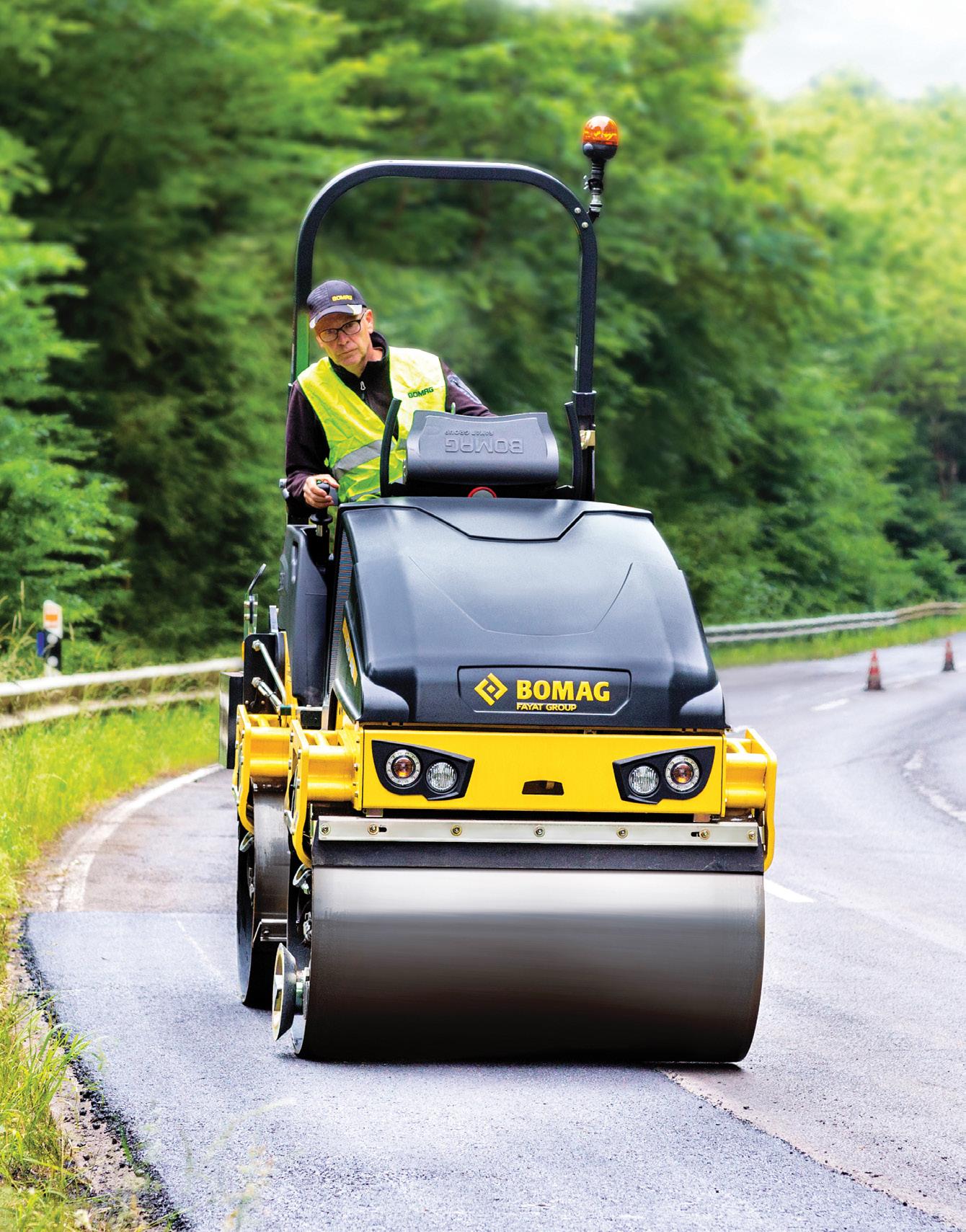
“We are excited to team up with BOMAG,” stated Gino Morin, vice president of corporate sales for Linder. “Their paving, compaction, milling and stabilizing lines are top notch. BOMAG’s innovation continues to impress as they add transformative technology and make operation safer and more productive for our customers.”
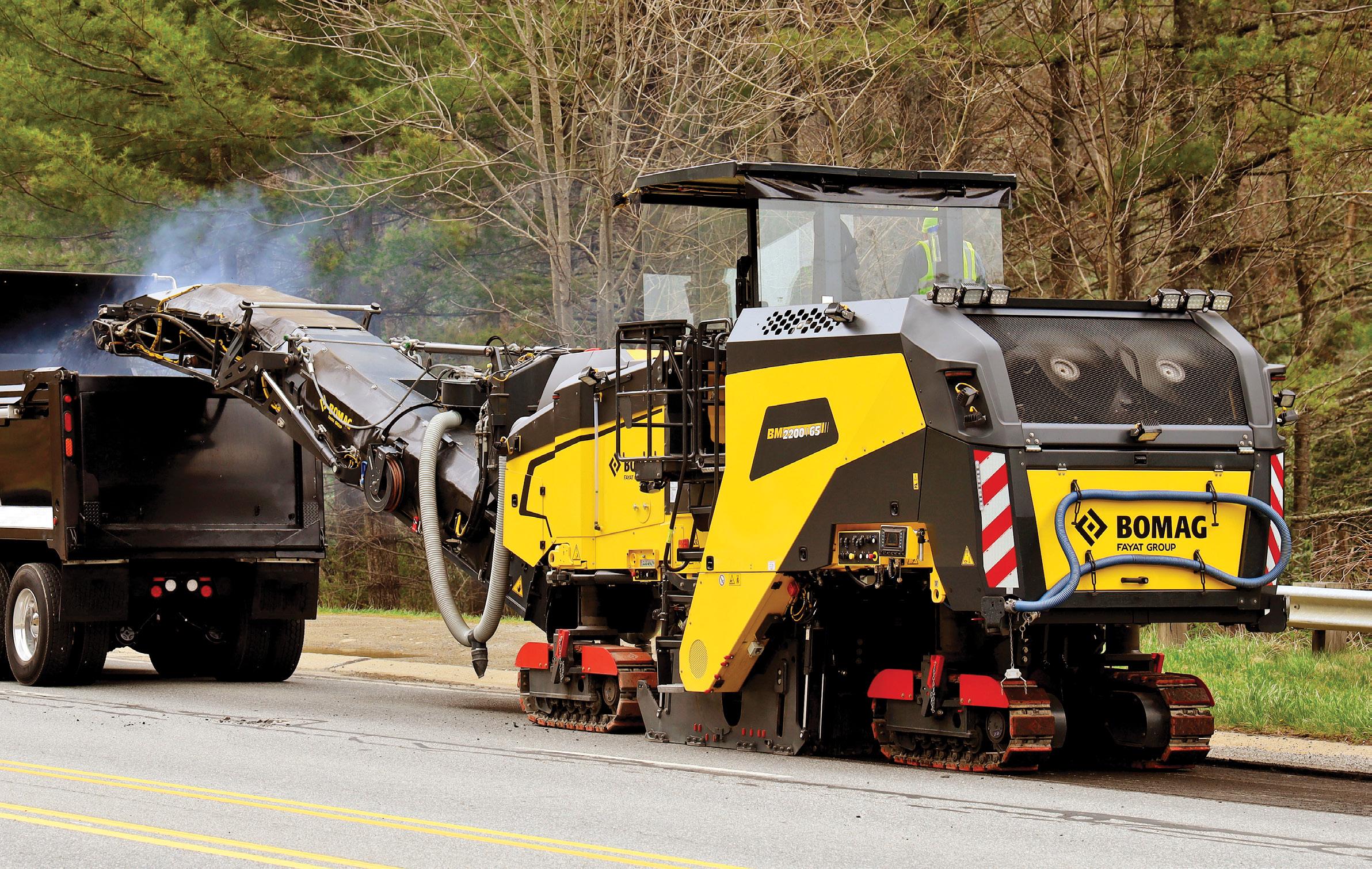
“Komatsu recently developed a landfill package for its waste handling machines, and the BOMAG rollers will complement that equipment. We are excited to be a larger player in that industry.”

As the partnership grows, Mueckler looks forward to expanding BOMAG’s market share.
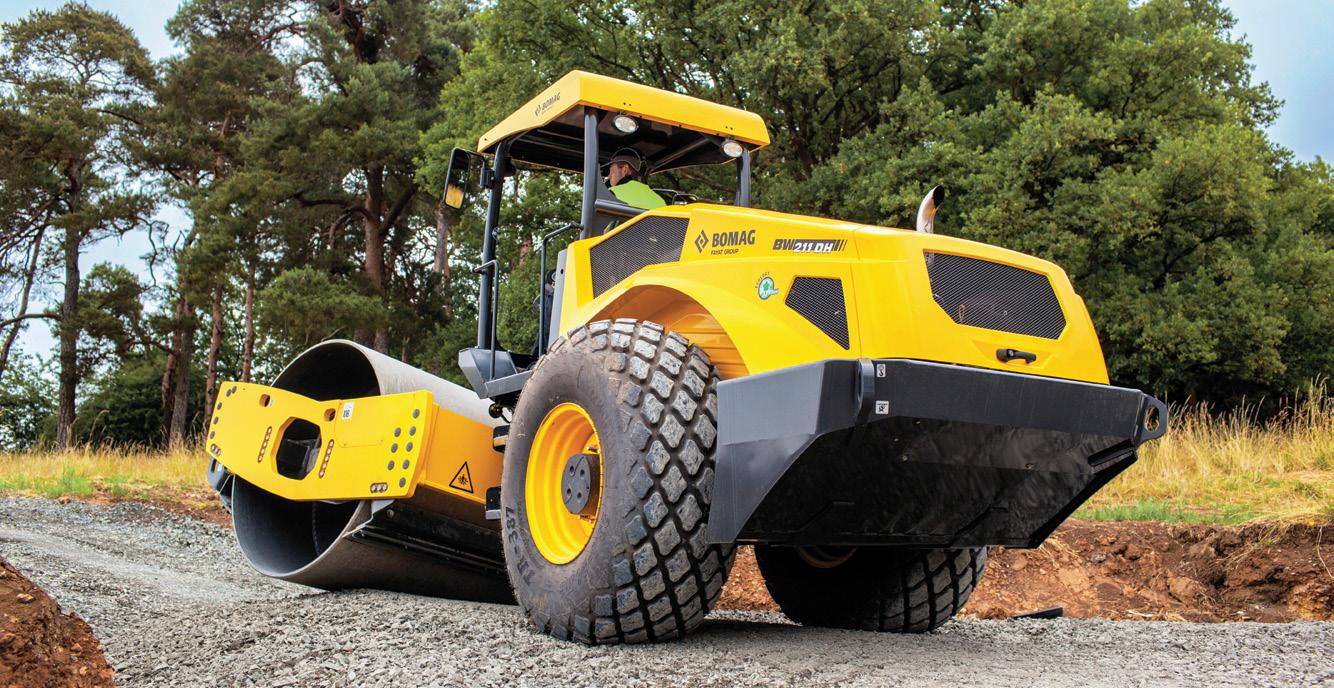
“Our goal is for BOMAG to become the standard choice of equipment in Linder’s territory for the road building sector over the next five years,” said Mueckler. “Through Linder’s and our combined support, we believe that is possible, and we look forward to building a strong relationship for years to come.”
■



You Better
Linder opens new branch in Fort Myers, Fla., gets award from Genesis Attachments

LLinder Industrial Machinery Company recently debuted its new 22,000-square-foot branch in Fort Myers, Fla., to customers, friends and family. Situated half a mile off I-75, the 10-acre property enables Linder sales, parts and service representatives to meet the growing demand for construction services throughout Central Florida. “Our new branch in Fort Myers will provide our customers with a premier experience, whether that’s through our parts, service or sales department,” said John Coughlin, the president and CEO of Linder. “Everything we built was with the customer in mind. We focused on creating a facility geared towards efficiency and speed to service our customers faster and limit downtime.”
The facility includes a 4,000-square-foot parts warehouse (double the size of the previous warehouse), eight drive-through service bays,
a state-of-the-art wash facility, two 10-ton overhead cranes, and many other upgrades.
“We’re able to service four to five times the number of customers and equipment compared to our previous location,” noted Coughlin. “We made it an emphasis to welcome as many of our customers, employees and their families to see the new facility at our open house in July. The feedback was all very positive.”
Dealership recognition
In other news, Genesis Attachments LLC recognized Linder as one of its top five dealers for North America. The company sells a range of shears, grapples and other demolition attachments.
“Genesis has been a great partner for Linder,” said Coughlin. “We look forward to continuing to grow their brand through our new facility and building the relationship into the future.” ■
Discover more at TheLinderLink.com

Employees from Komatsu America and Linder gather for the ribbon-cutting ceremony to officially open Linder’s new Fort Myers, Fla., branch.
Linder’s new 22,000-square-foot facility includes a 4,000-square-foot parts warehouse, eight drive-through service bays, a state-of-the-art wash facility, two 10-ton overhead cranes, and many other upgrades from the previous location.
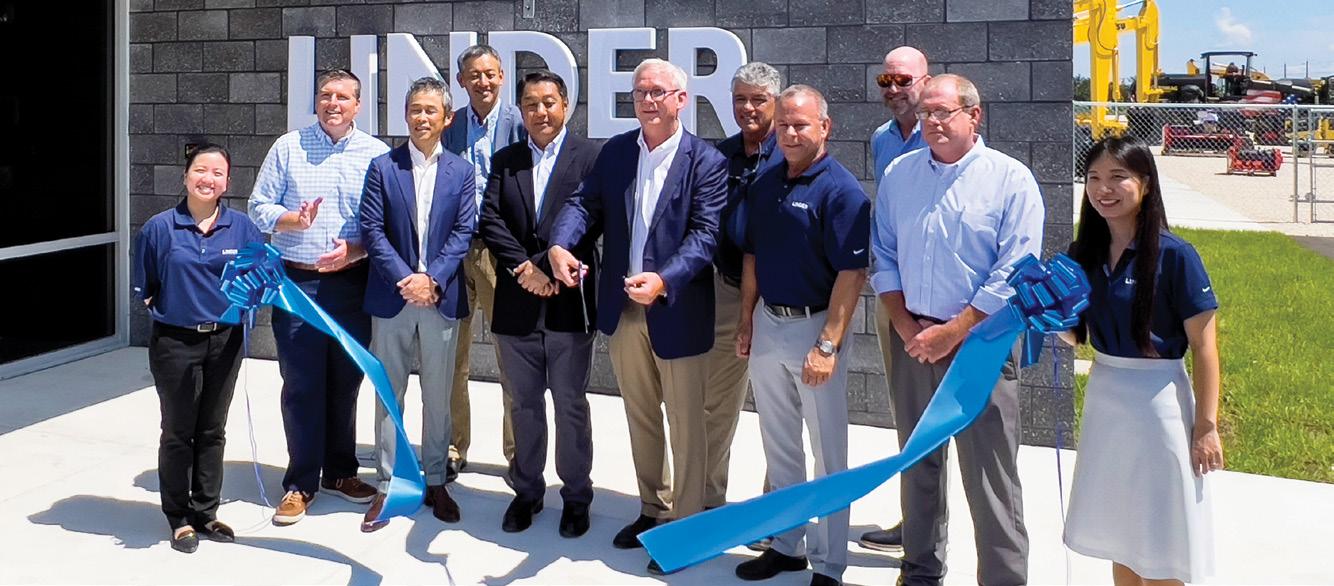
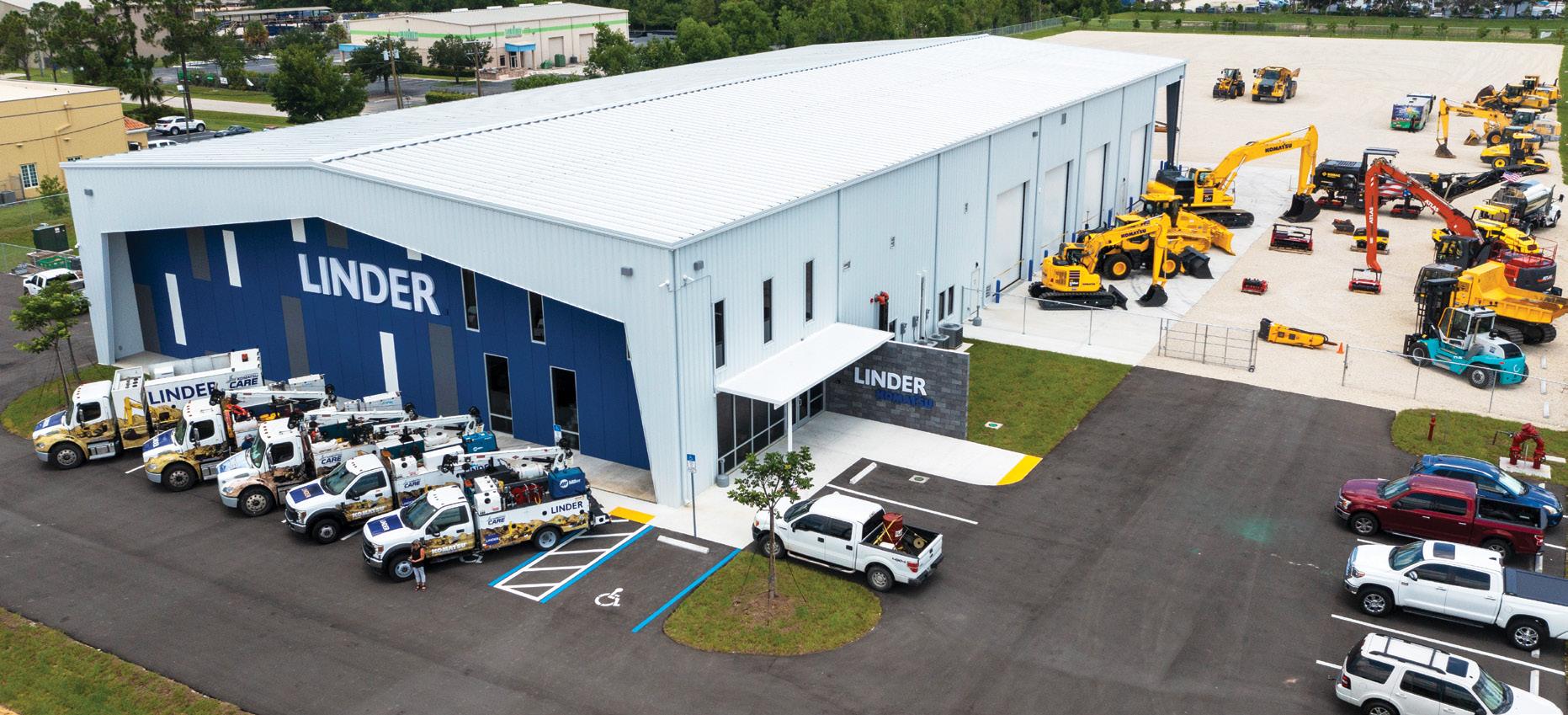
SINCE 1978.
Rammer has been developing and manufacturing demolition equipment for over 40 years. In 2020, Rammer acquired USA-based distributor Allied Construction.


WH AT 'S ON Y OU R EXCAVAT OR?
Known for quality, performance, and reliability, Rammer offers a comprehensive range of powerful, productive, and durable hydraulic attachments for carriers that are 0.6 to 120 tons.

SUPPORT AND SERVICE YOU CAN COUNT ON.
The Rammer North American sales team has over 150 years of attachment tools and industry experience.

Guest Opinion
Here are some considerations if you are new to bidding federal projects
TThe $1.2 trillion Bipartisan Infrastructure Law, also known as the Infrastructure Investment and Jobs Act (IIJA), has many contractors considering federal projects for the first time. Before you dive into the world of federal construction, there are a few key factors you should examine to ensure you are well-equipped and ready for the challenge.
Federal projects are slow paying
If you are working directly for the government, it could easily be 90 days from the time you submit a pay application to when you get paid. If you are a subcontractor, it could take even longer because of the Pay-When-Paid (PWP) clause. Before taking on a federal project, ensure that your cash flow is steady enough to handle financing your materials and labor for the project for several months after submitting your pay applications.

Federal projects often require bonds
Nearly every federal construction project requires bonds. There are two types: a payment bond and a performance bond. A payment bond guarantees that all your laborers and material suppliers are paid. A performance bond covers the cost of completing your scope of work if you abandon or are terminated from the project.
The law requires that the general contractor acquires a payment bond for federal projects, but the federal government has no duty to make sure that one is actually provided. This is why it is so important to get a copy of the general contractor’s bond before you start work, so you know exactly who you need to contact if you don’t get paid.
The general contractor’s bond company will usually require that all subcontractors “bond back,” which means that they will receive both a payment and performance bond in the full amount of their subcontract that is payable to the general contractor in case they cannot pay their team or complete their work. If you are a subcontractor or material supplier, you must send the general contractor notice of your bond claim. The notice must be sent within 90 days of the last day of work or the last time materials were supplied. While you don’t have to send it to the bond company, you’ll probably have more leverage if you do.
Be prepared
If you rarely sign public works contracts, consider having your contract reviewed by an experienced construction attorney. Even if you do not want to negotiate any of the terms, it’s wise to clearly understand what you are agreeing to do when you sign the contract, and be prepared on the front end. ■
About the Author: Published author, award-winning lawyer, devoted wife and mother, and owner and seasoned managing partner of The Cromeens Law Firm (TCLF), Karalynn Cromeens is a true jack of all trades. She is the co-founder of Morrell Masonry Supply and owner of The Subcontractor Institute, an easy-access online educational platform for contractors. In the 17 years Cromeens has practiced construction, real estate and business law, she has reviewed and explained thousands of subcontracts. Providing education to contractors on a national level has become her personal mission, and she is always doing what she can to help make it a reality.
The new $1.2 trillion Bipartisan Infrastructure Law provides a wealth of new opportunities, but if you have not done federal work before, you should carefully consider some things, such as delayed payments, before diving right into bidding.
 Karalynn Cromeens
Karalynn Cromeens
Fuel Facts
Here are some tips on how to lower fuel costs even when prices are high
FFuel is a major expense for most construction companies — and when its cost goes up, so does the threat to companies’ bottom lines. While we cannot control the price at the pump, the good news is there are still ways for construction companies to reduce their fuel usage and lower costs.
Negotiate

In some cases, you can help defray costs through contracts and agreements. Negotiating a surcharge clause that gives you the ability to raise prices if fuel costs reach a certain level is a possibility. You may also have a simple deal with a customer that gives you the ability to do the same. If you signed a contract before prices soared and don’t have fuel surcharges in place, you can try to add them, but it’s more likely you will have to seek ways to reduce your owning and operating costs to offset the higher price.
Reduce your idle time
If you are idling for extended, unproductive periods of time, you are wasting fuel.
Idling is necessary in certain situations such as warming up and cooling down a machine. It could also be justified when you
are in high-production activities that involve near-constant movement, such as loading trucks with an excavator and charging crushers with a loader, where restarting would negatively affect productivity.

Telematics let fleet managers easily track idle time by machine for their entire equipment lineup. If they see excessive idling, they can address it with operators and other on-site personnel.
Using Auto Idle Shutdown, a feature available on most Tier 4 Final machines, is an easy way to decrease idle time during unproductive periods. Your machines’ operations and maintenance manuals can show you how to set it — the minimum is five minutes before shutdown begins in most cases — and your local dealer can help too.
Heed ECO Guidance suggestions
ECO Guidance, which provides information to operators on energy-saving operations that reduce fuel consumption, is a feature on most machines introduced during the past 10 years. It displays messages on the monitor in certain situations, such as an idling stop guidance if
Excessive idle time wastes fuel and reducing it can be one of your biggest cost savers. Using Auto Idle Shutdown, a feature available on most Komatsu Tier 4 Final machines, is an easy way to decrease idle time during unproductive periods. Another available feature is ECO Guidance, which provides information to operators on energy-saving operations that reduce fuel consumption.
Watch the videoFuel is a major expense for construction companies, but no matter the price, there are easy ways to reduce usage, such as using technology, choosing properly sized machines, and running them in the right mode.
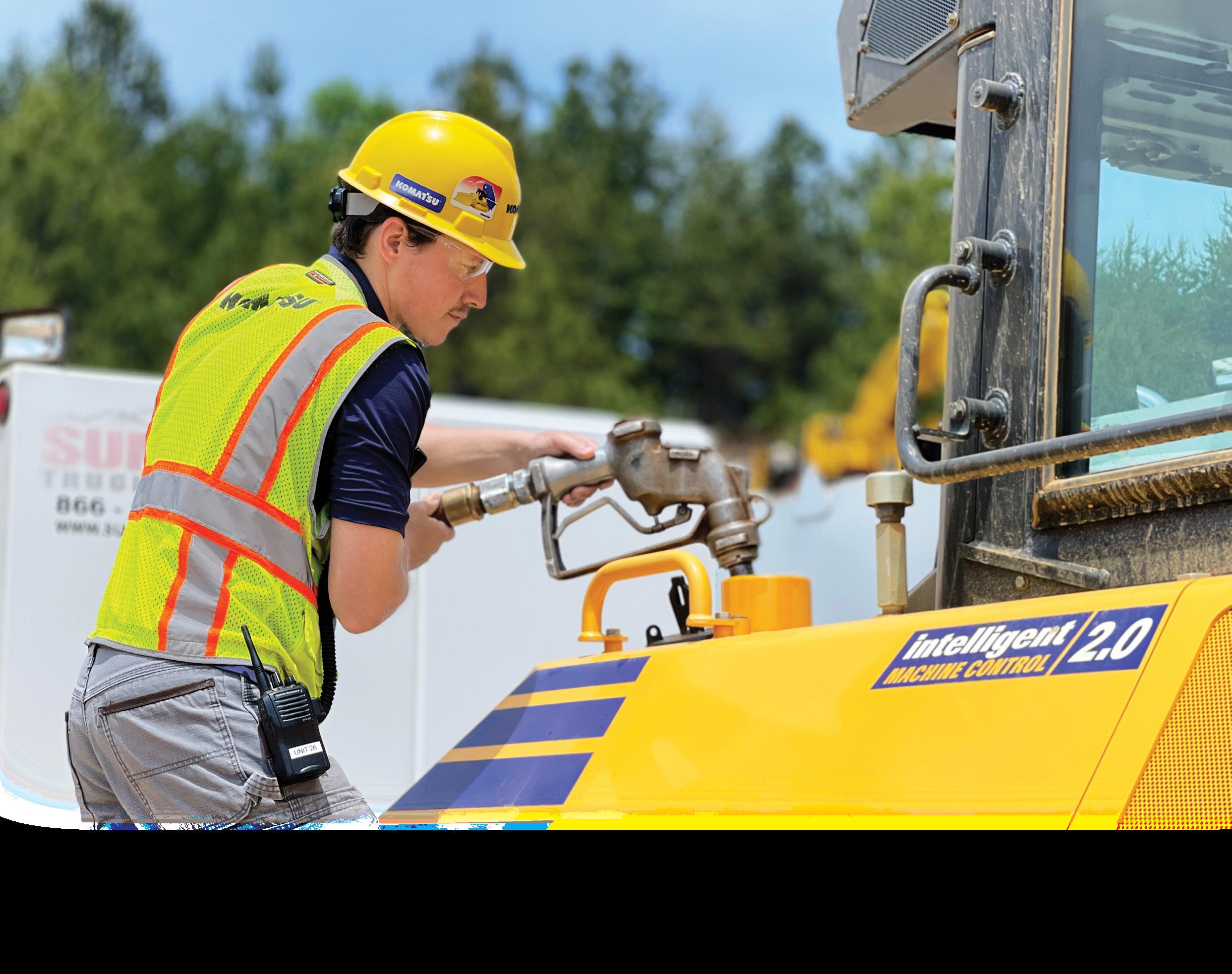
no operation is performed for more than five minutes, and the engine is idling.
Choose the most effective mode
ECO Guidance might also suggest operating in Economy (E) mode instead of Power (P) mode.
E mode provides better fuel efficiency, so it’s often the best choice. Excavators and dozers are used for both digging and moving naturally compacted soils, and in most instances, E mode will get the job done without unnecessary fuel burn. However, if the material is hard such as heavy clay and requires greater power to move, then P mode should be used.
Properly size and match equipment for the task
Bigger is not always better and using a large machine for a job that a smaller one can efficiently do increases fuel usage and overall operating costs. Fleet managers need to consider several factors when utilizing equipment, including choosing the right size for the job.
It is also important to consider sizing attachments correctly. Excavator buckets are
a prime example. Many contractors believe bigger is always better with buckets. However, at the end of the day, the pile of dirt excavated or loaded is often the same with a properly sized smaller bucket. Larger buckets extend cycle times, work a machine harder, spend more time over hydraulic relief, and end up burning more fuel.
Use technology

GPS-based grading helps increase productivity and lower per-yard costs to move material. In the last 20 years, GPS technology has improved significantly with integrated machine control that lowered costs associated with replacing cables, masts and additional satellites that increased accuracy.
Many of today’s machines with integrated GPS grade control also feature additional technologies, such as Komatsu’s Proactive Dozing Control logic, that help operators get to grade even faster and at lower costs, including reduced fuel usage. An added benefit is that technology is helping new operators become proficient at moving dirt faster than ever before. ■
Editor’s Note: This article is excerpted from a longer blog. To read it in its entirety and find out more about fuel savings, visit https://www.komatsu. com/en/blog/2022/ tips-for-lowering-yourfuel-costs-even-whenprices-are-high/.
in Action
New tech helps drive record attendance at Demo Days, extra day added to the event


KKomatsu’s 2022 Demo Days was years in the making — three, to be exact. Komatsu last held the event — which invites customers to try its latest machines and technologies — in the fall of 2019 before the COVID-19 pandemic shut down large gatherings. While events might have been paused, Komatsu innovation wasn’t. During the pandemic, the company released new machines and technologies that many customers were eager to try.
So, when Komatsu announced it was bringing back the popular event at its Training Center in Cartersville, Ga., current and potential customers, as well as their distributors, couldn’t wait to get back. Interest was so high that Komatsu turned Demo Days into a four-day event instead of its usual three.


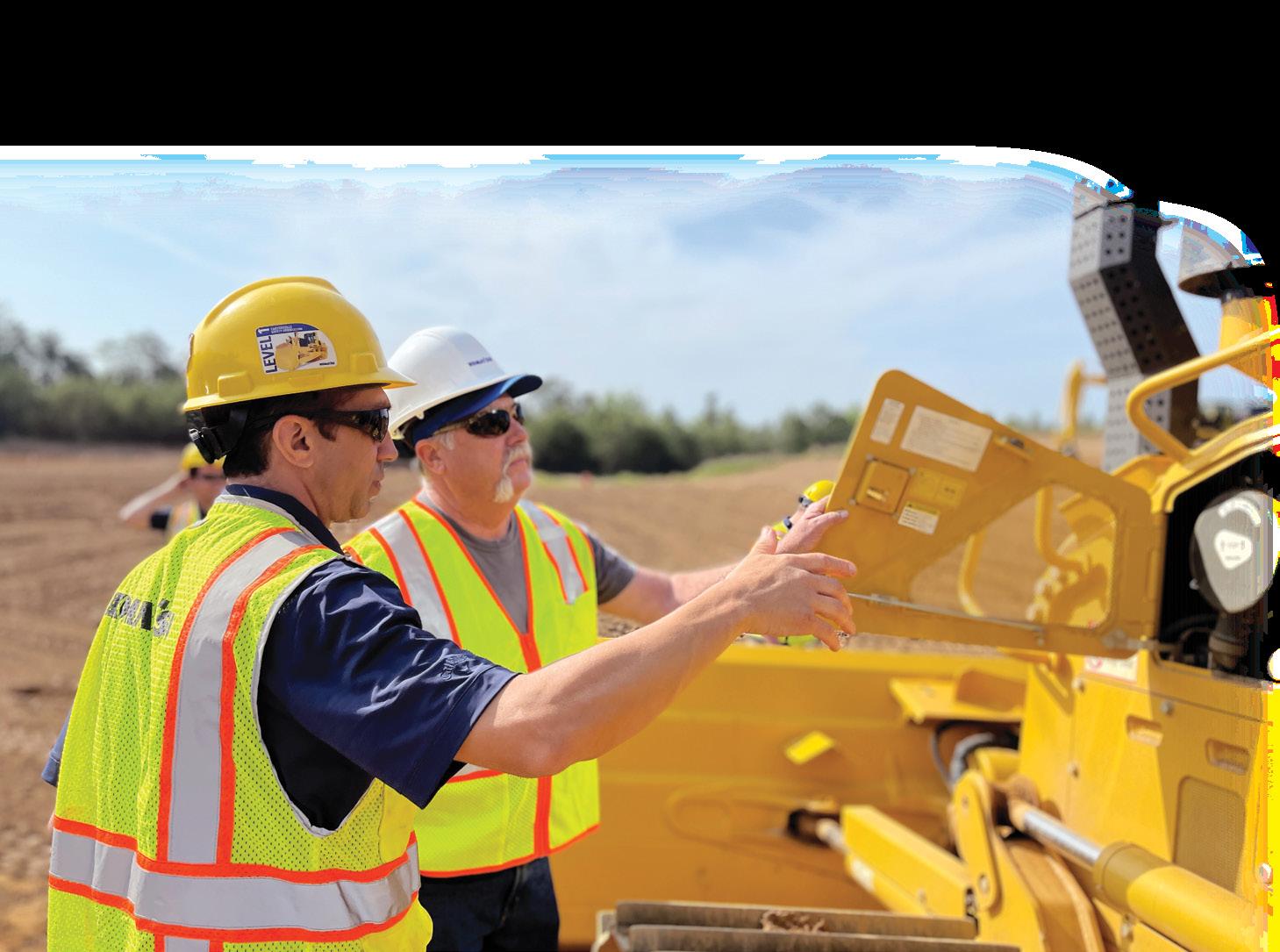
“We could definitely see there was pent-up demand,” said Komatsu’s Ryan Stachowski, lead demonstration instructor and sales trainer, who was the emcee and host of Demo Days. “Our number of available slots were filled almost immediately. It took a lot of work and long hours to put Demo Days together, and the payoff is seeing the smiles on customers’ faces. You can tell that they truly enjoy being here.”
Among the highlighted machines was the D71PXi-24 intelligent Machine Control (iMC) 2.0 dozer that features new technology such as lift
layer control, tilt steering control, quick surface creation and proactive dozing control. It’s now the largest of Komatsu’s hydrostatic dozers and maintains the super-slant nose design.

Attendees could also run a PC210LCi-11 iMC 2.0 excavator with auto tilt bucket control that enables automatic control of the bucket/attachment angle to match the cutting edge of the surface. Like all iMC excavators, the full bucket profile protects against over-excavation even when the machine is not facing directly toward the target surface. With iMC 2.0 and an IMU sensor, the full bucket edge stays on the surface and automatically returns the bucket to a horizontal loading position.
In total, more than 20 machines and haul trucks were available to operate at Demo Days. Komatsu also displayed products from its forestry and forklift lines, as well as provided information on ground engaging tools from Hensley Industries (a Komatsu company). Additionally, attendees could tour Komatsu’s Chattanooga Manufacturing Operation and see excavators and forestry equipment being built.
Komatsu Smart Construction solutions managers were on hand to answer questions and provide information about Smart Construction solutions, including the upcoming Smart Construction Office.
“Smart Construction is a foundation for what’s coming in the future,” said Bryce Satterly, Smart Construction solutions manager. “If you have Field, Office is the next logical progression of digital solutions. The integration of Office and Field offers great time savings because it reduces or eliminates the need to manually update scheduling and cost analysis, which is typically done weekly or monthly. Project managers always have the most current information, so they can make faster decisions.”
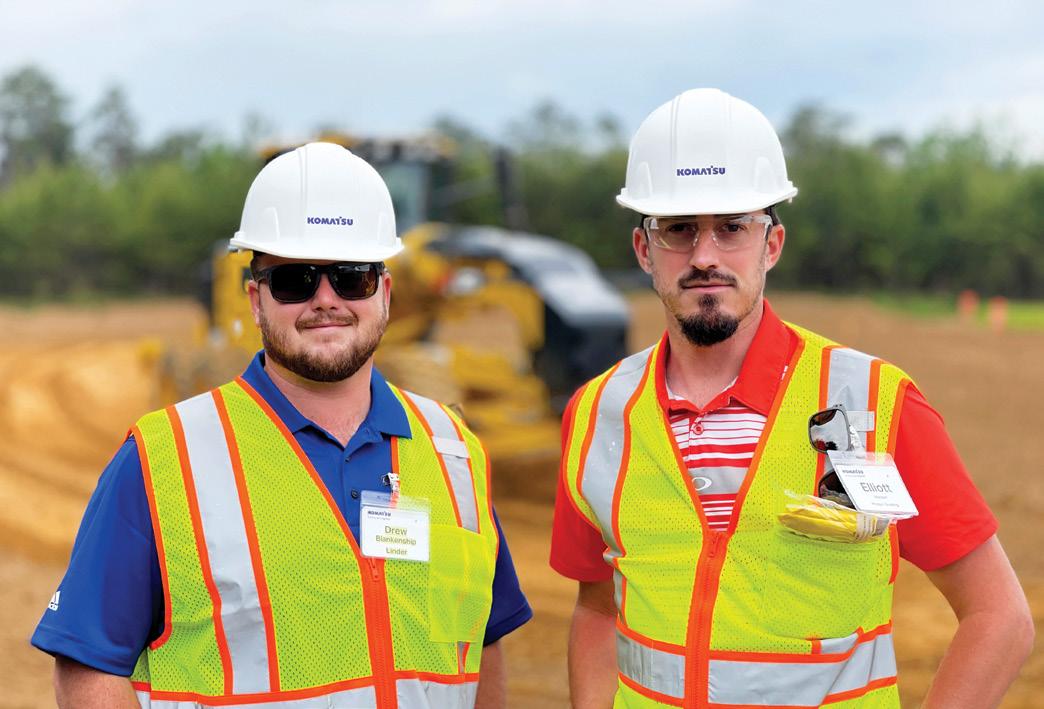
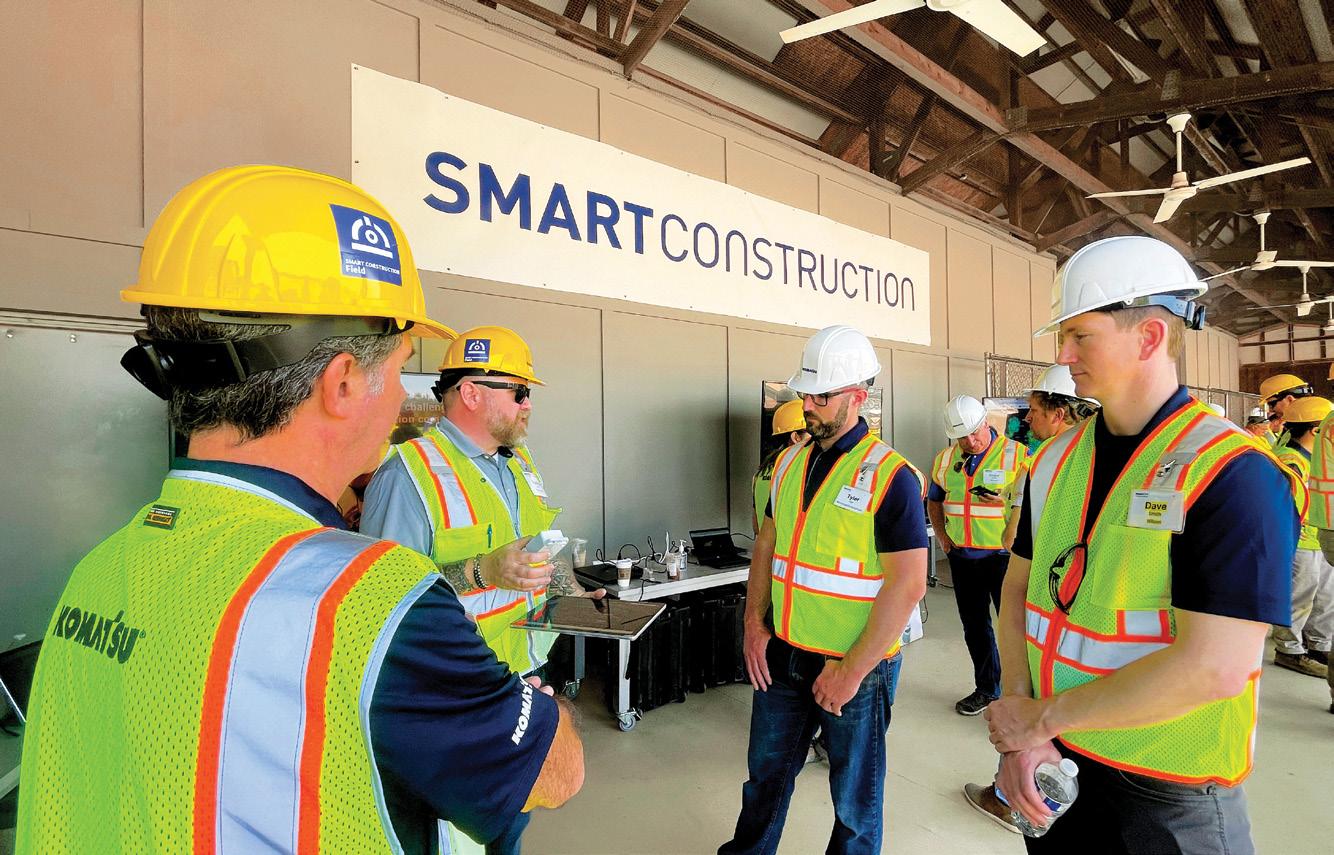
Attendees have fun Stachowski emphasized that in addition to being able to operate equipment, attendees were eager to learn.
“They had really in-depth conversations with our experts and really challenged them for real solutions,” said Stachowski. “What I hope they take away from an event like this is that they learn a little bit more about Komatsu that they didn’t know before, and that this is a place they can get their questions answered by the people that work day in and day out to develop these machines for them.”
Komatsu plans to host another event sometime this fall. ■


Editor’s Note: This article is excerpted from a longer blog. Learn more about Demo Days by visiting https://www. komatsu.com/en/blog/2022/new-techhelps-drive-record-attendance-atdemo-days/.
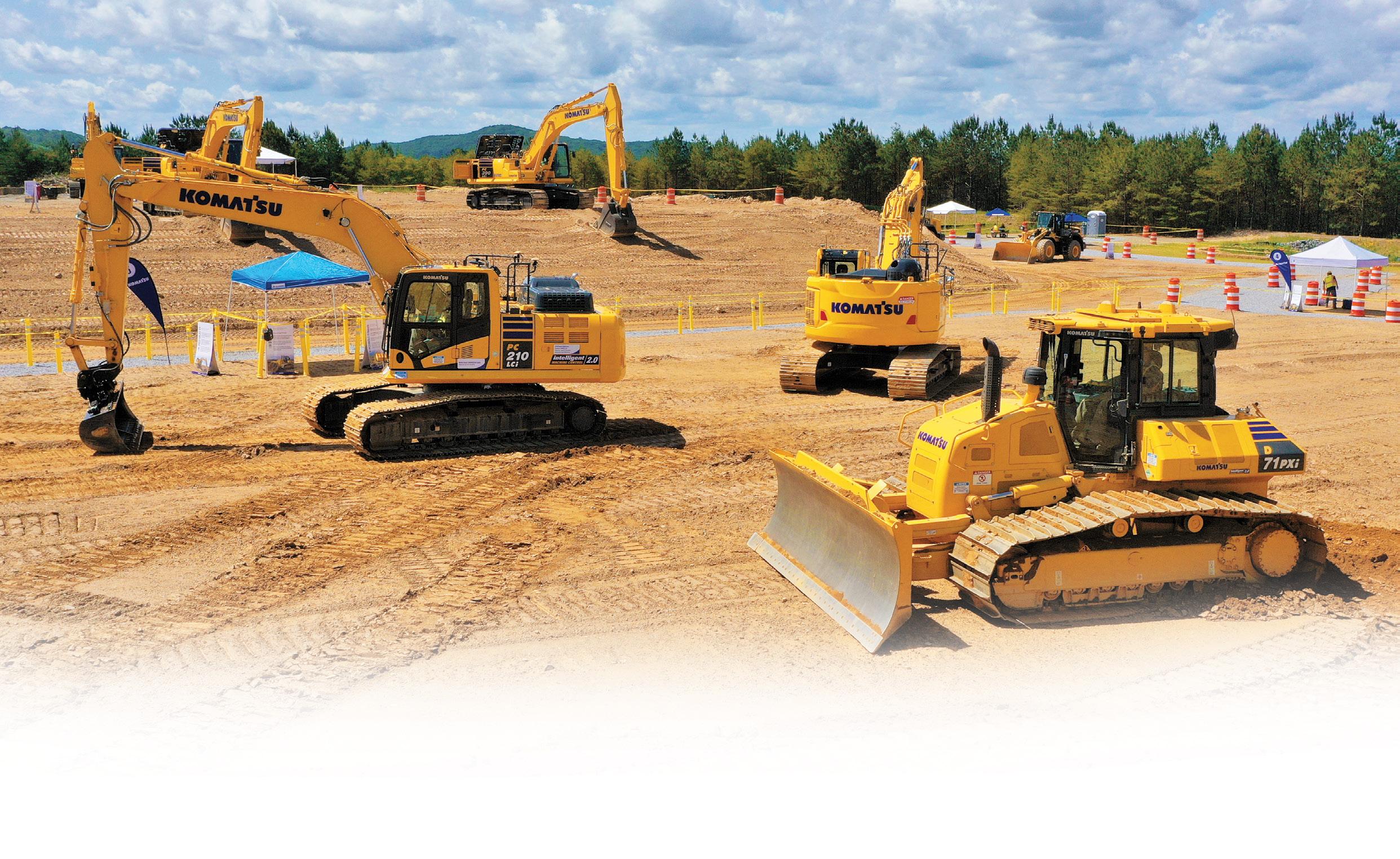 Smart Construction personnel were on hand to answer questions about how the solutions can transform attendees’ businesses and make them more efficient.
During Demo Days, attendees could operate more than 20 machines, including the popular D71PXi-24 iMC 2.0 dozer, a PC210LCi-11 iMC 2.0 excavator with tilt bucket control, and a PC238USLC-11 excavator with a Smart Construction Retrofit kit.
Smart Construction personnel were on hand to answer questions about how the solutions can transform attendees’ businesses and make them more efficient.
During Demo Days, attendees could operate more than 20 machines, including the popular D71PXi-24 iMC 2.0 dozer, a PC210LCi-11 iMC 2.0 excavator with tilt bucket control, and a PC238USLC-11 excavator with a Smart Construction Retrofit kit.
THE LATEST IN MILLING TECHNOLOGY
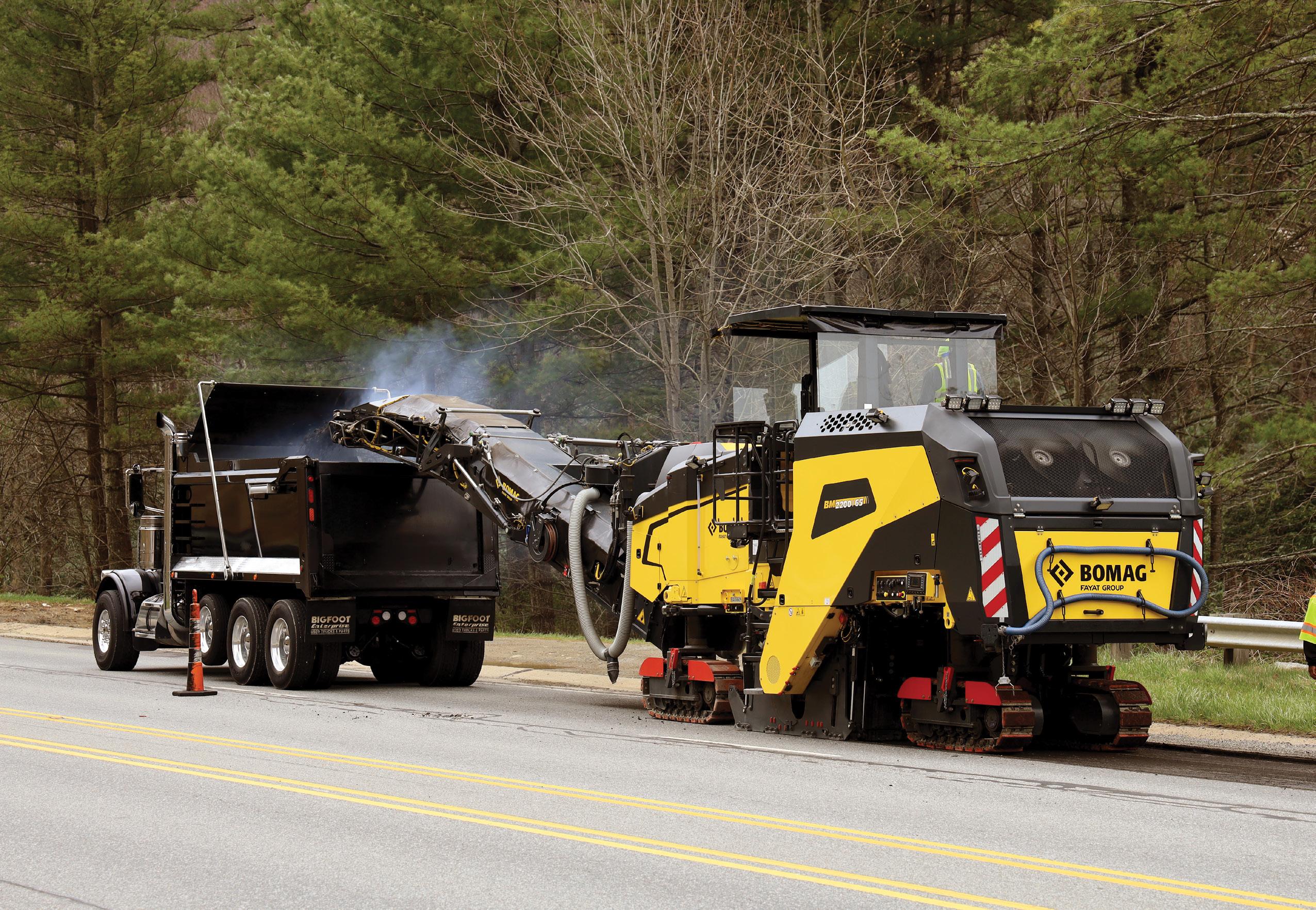
The NEW
with
is
from
on
This
For more
contact
Updated Machine

BOMAG’s BM 600/15-2 gives you flexibility to handle a variety of tight, small milling applications
TTight spaces require a compact mill. In those applications, you want a machine that will get the job done as quickly and cost-effectively as possible.
“The BM 600/15-2 delivers in general road repairs as well as working around manholes and removing narrow strips of asphalt,” said Dennis Frenzius, product manager for milling machines, BOMAG. “With these second-generation machines, we focused on customer feedback. We improved visibility to the cutting area and further increased ease of operation with joystick control and a clearly designed operating panel.”

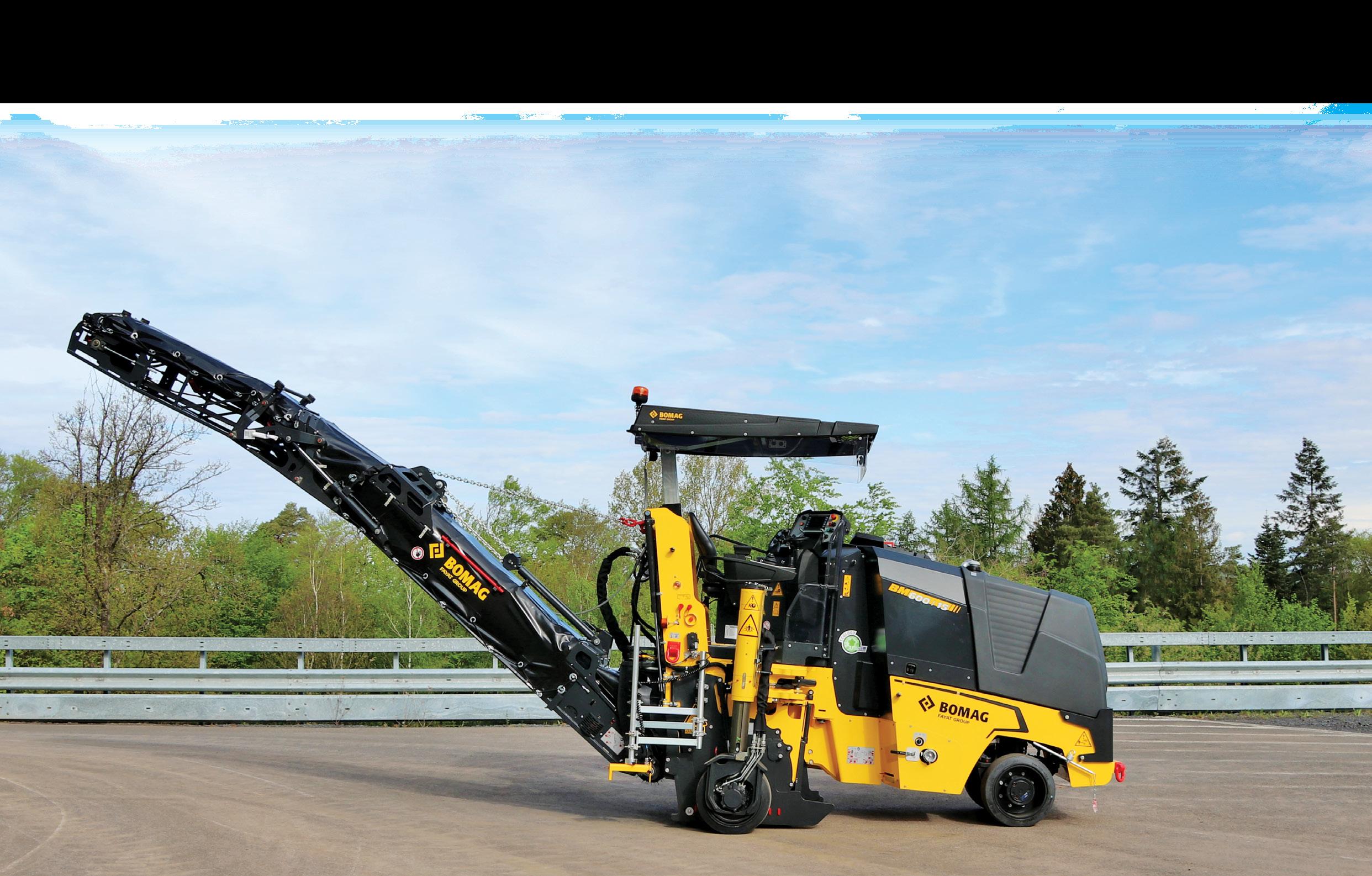
BOMAG’s BM 600/15-2 comes in three- and four-wheel designs, and both feature machine-leveling sensors that are integrated into the mill’s side plate cylinders. A 7-inch full graphic color display offers intuitive operation and leveling control for efficient mill setup. A triple-setting water pump system allows operators to adjust water flow as needed.
The BM 600/15-2 has a standard drum width of 23.6 inches that can be used for multiple applications. BOMAG’s quick-exchange drum design lets you easily switch to smaller drums to match your project, ranging from the standard size down to 3.15 inches. The machine’s milling depth is up to 8.3 inches.
For even greater flexibility, there are optional drums, including a fine milling drum with more cutting tools that increases the skid resistance on smooth road surfaces; removes light ruts, uneven areas and road marking; and prepares sites for laying thin layers. POWER DRUMs are available for hard materials. They offer 30% higher performance than the standard drum in that application.
Larger conveyor swivel angle
With the second generation, BOMAG increased the swivel angle of the 15.7-inch conveyor belt to 30 degrees for greater flexibility in loading trucks at discharging capacity. The belt can be folded hydraulically for optimum transport.
Service points are grouped for easy access and quick serviceability to minimize downtime and maximize production. Monitoring maintenance and service information — as well as other vital data such as idle time, fuel consumption and more — can be done using BOMAG TELEMATIC.
“These mills reduce manual labor and lower costs,” said Frenzius. “The leveling system is the same as on our bigger BM models, so operators can work between the two without having to take a lot of valuable time to familiarize themselves with something new. We encourage anyone who needs a compact mill to contact their BOMAG dealer for more information.” ■
Dennis Frenzius, product manager for milling machines, BOMAGProprietary iMC 2.0 promotes significant productivity gains for Komatsu’s mid- to large-sized construction excavators
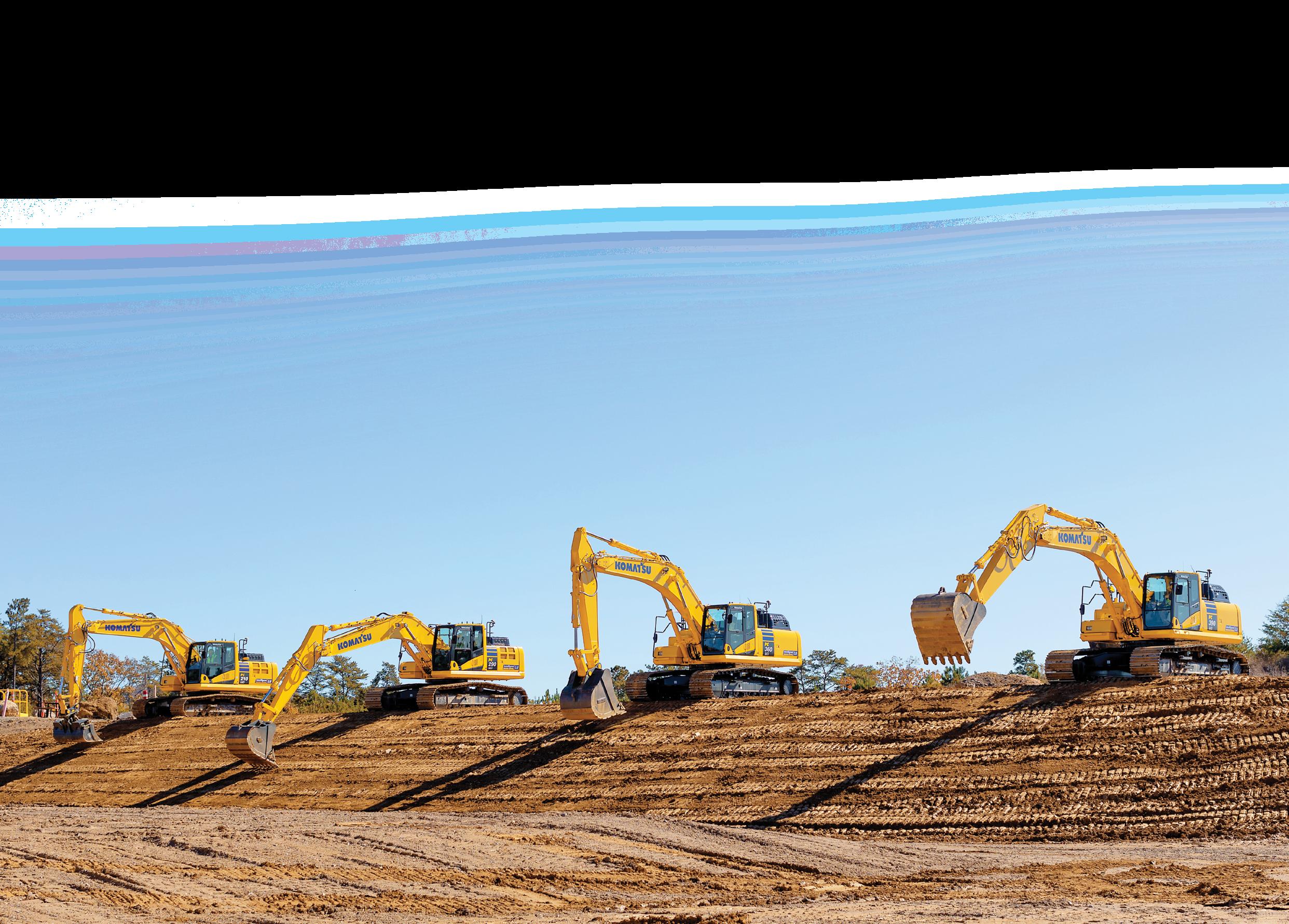
PProductivity is the key to success on the job site, and the faster a crew can reach maximum productivity, the better. As part of Komatsu’s suite of Smart Construction products, services and digital solutions, its intelligent Machine Control (iMC) 2.0 gives contractors the opportunity to take advantage of sophisticated, productivity-enhancing automation.
“Aimed to quickly lessen the skill gap between new and experienced operators — and improve the bottom line for contractors — our excavators with iMC 2.0 technology can help contractors transform their job sites into highly efficient, highly productive operations,” said Andrew Earing, senior product manager, tracked products, Komatsu.
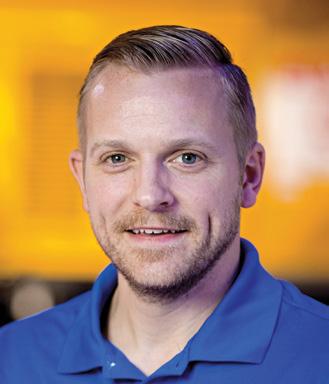
Developed with input from leading construction companies, Komatsu’s iMC 2.0 offers additional new features such as auto tilt bucket control and bucket angle
Quick Specs
Model
PC290LCi-11
PC360LCi-11 PC390LCi-11
Horsepower 196 hp 257 hp 257 hp
Operating Weight
70,702-72,091 lbs. 78,645-80,547 lbs. 87,867-90,441 lbs.
Bucket Capacity 0.76-2.13 cu yd 0.89-2.56 cu yd 0.89-2.91 cu yd
Auto tilt bucket control and bucket angle hold control are exclusive new features of Komatsu’s iMC 2.0 excavators, including the recently introduced PC290LCi-11, PC360LCi-11 and PC390LCi-11. “Our excavators with iMC 2.0 technology can help contractors transform their job sites into highly efficient, highly productive operations,” said Andrew Earing, senior product manager, tracked products, Komatsu.
hold control on several mid- to large-sized construction excavators: the PC290LCi-11, the PC360LCi-11 and the PC390LCi-11.
“They are an excellent match for footing excavation, trenching and slope work, with factory-integrated systems to help minimize over-excavation and empower operators to dig straight to grade quickly and accurately,” said Earing.
Exclusive iMC 2.0 productivity features

Auto tilt bucket control assists operators by aligning the bucket parallel with a slope, so finish grading can be accomplished without needing to align the machine with the target surface.
Bucket angle hold control helps operators reach finish grade quickly and accurately. It automatically holds the bucket angle to the design surface during arm operation, enabling operators to perform finish grading using only arm input.
Both new features build upon the semi-automatic functions that were maintained from the first generation of iMC excavators, including the ability to switch from manual to semi-automatic modes.
“Existing and new technology in the iMC 2.0 excavators has proven to increase production and efficiency while reducing costs,” said Earing. “We encourage anyone looking for those attributes to test one for themselves.” ■
Now there is an easy, affordable way to bridge the technology gap



Smart Construction Retrofit equips legacy machines with 3D guidance and payload monitoring — tools to drive accuracy and efficiency at your job site.
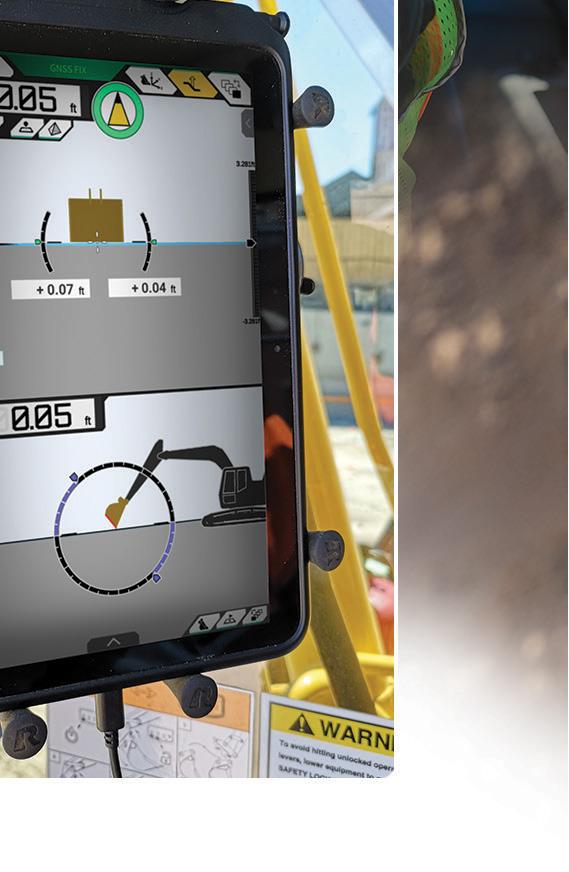
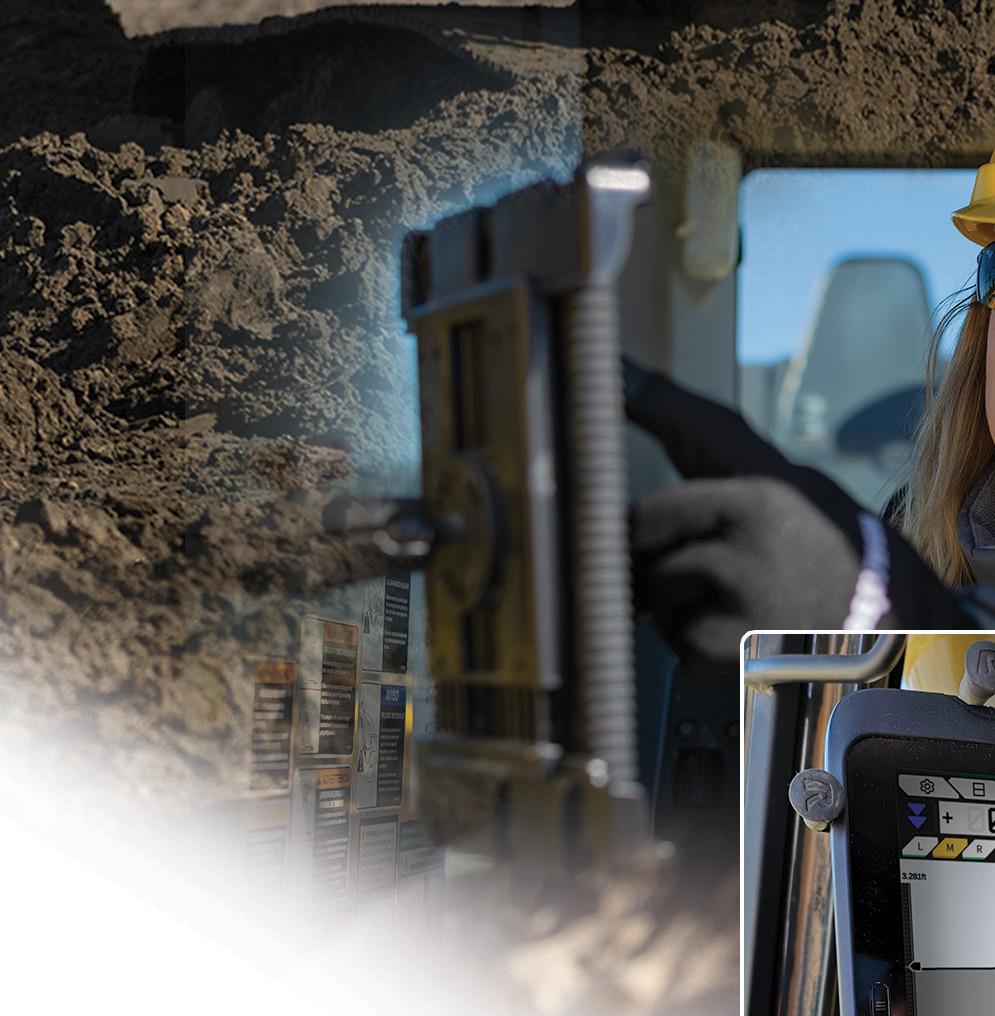
Learn more about this exciting new solution at komatsu.com/smart-construction-retrofit

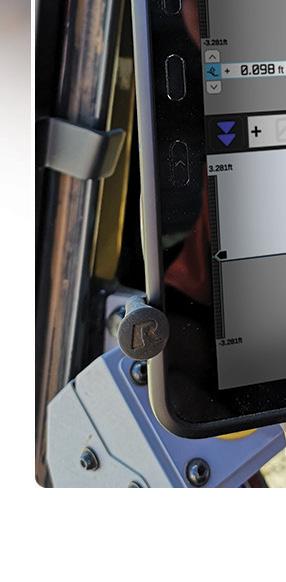
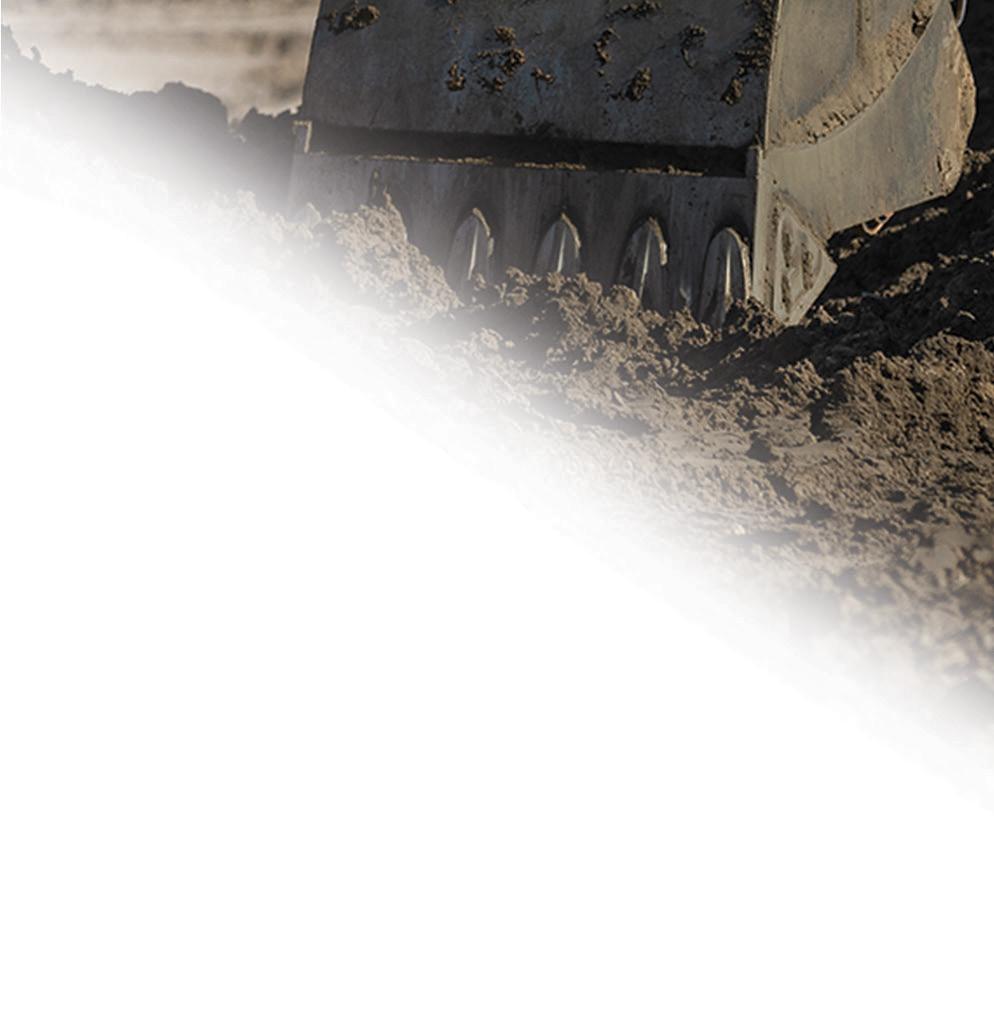

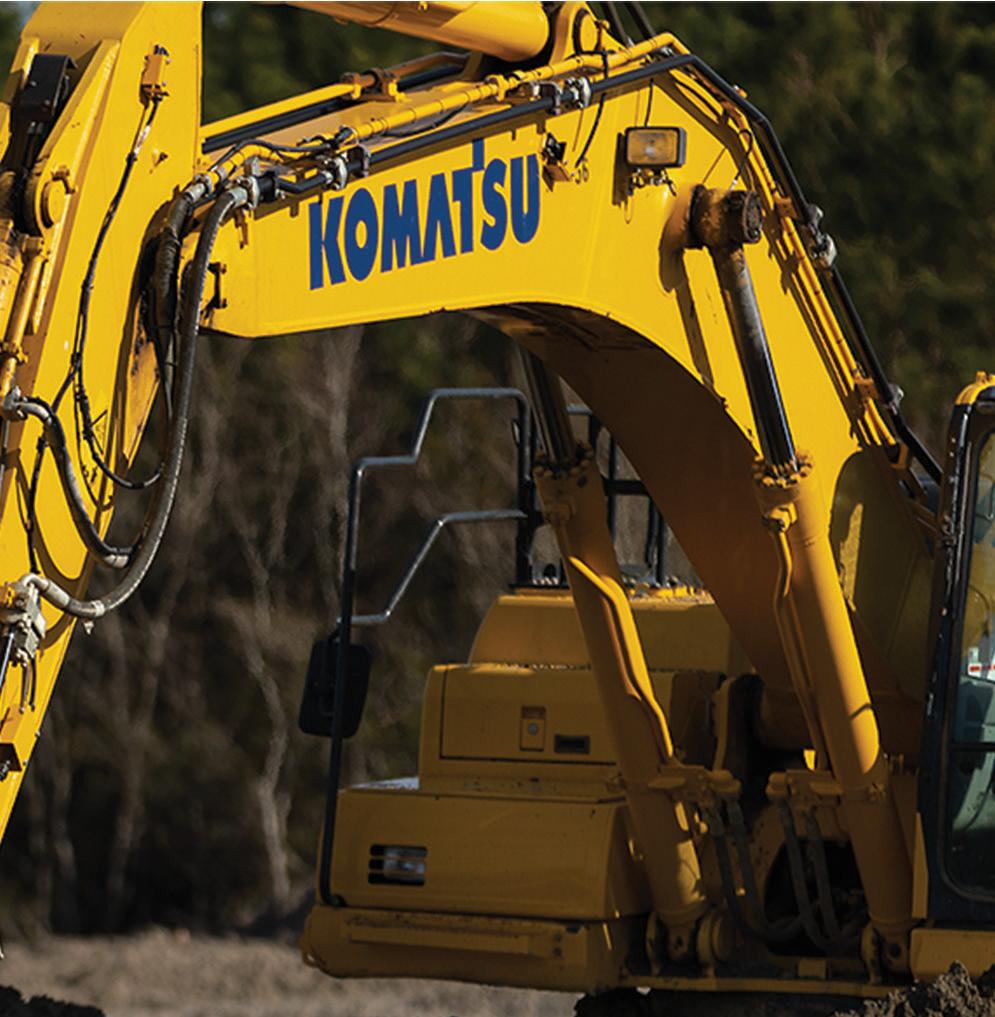
 Scan to learn more
Scan to learn more
ENDLESS CUTTING
Featuring high-quality blades that increase productivity and a lower jaw that endures hours of use, the Genesis XT mobile shear processes steel and other materials more efficiently in scrap and demolition applications.
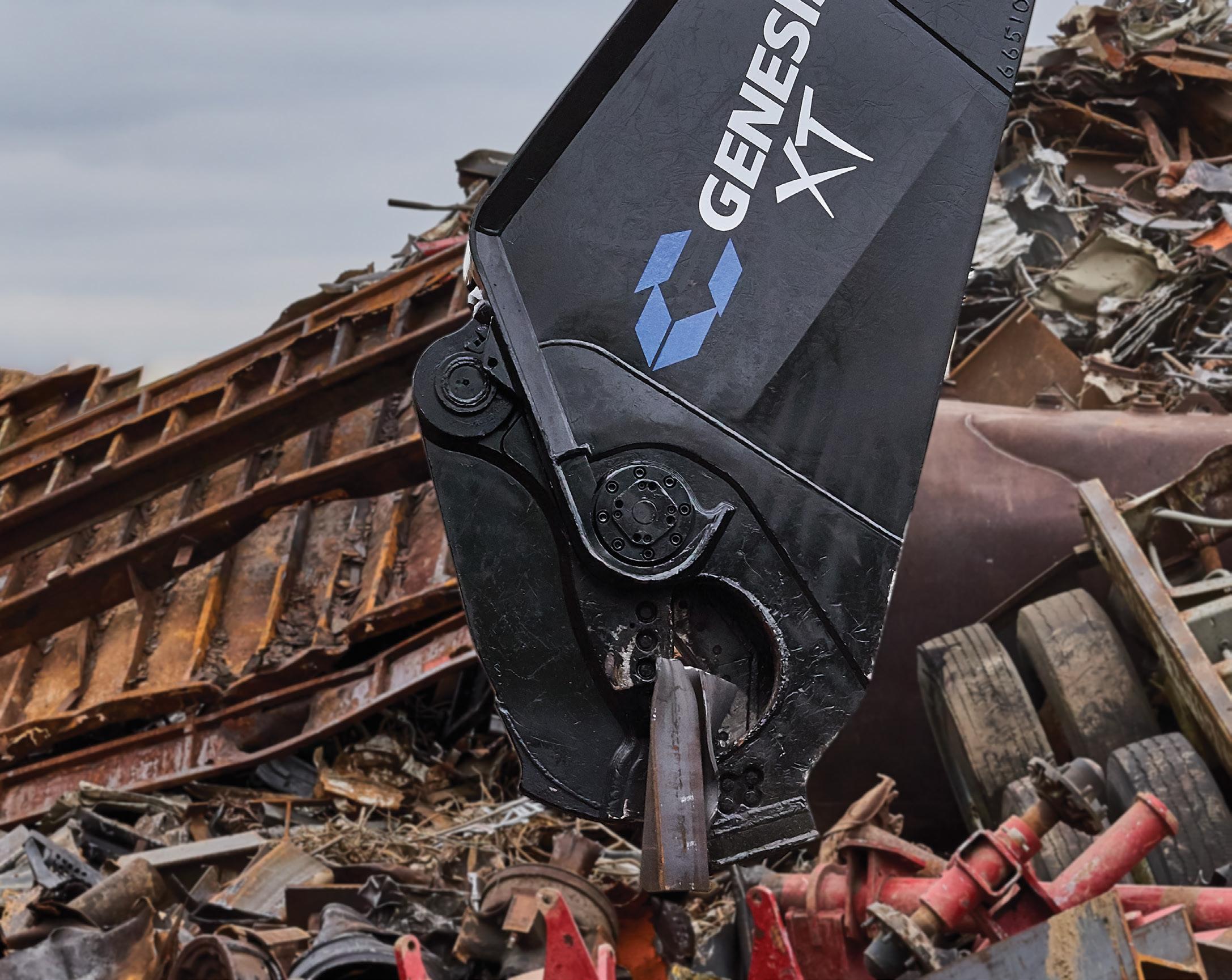
The GXT fits on smaller carriers, reducing initial acquisition investment and hourly energy consumption costs, and is available with Shear Jaw Armor® to minimize maintenance.
Visit linderco.com to learn more about the GXT mobile shears available through Linder Industrial Machinery.
New Solution
Want grade control for your standard excavators? Here’s a solution with an added bonus
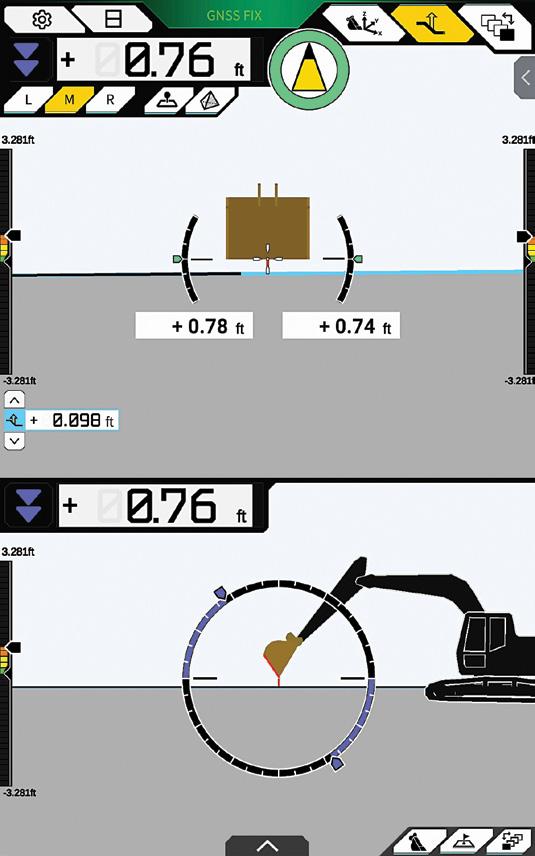
IIf you have an excavator without GPS grade control, you may be missing out on time and costs savings. What if there was a new solution that reduces staking, surveying and over-digging and allows you to do it cost-effectively with an added bonus?
“The new Smart Construction Retrofit Kit gives customers who want an entry-level, indicate-only system a solid choice,” according to Ron Schwieters, senior product manager, iMC and hardware, Komatsu. “It is three-dimensional, so operators get the advantage of seeing where they are on the project, as well as their relation to target elevation.”
Multiple components make Smart Construction Retrofit highly accurate, Schwieters added. The kit includes four inertial measurement units (IMU) mounted on the bucket, arm, boom and frame of the excavator. Two GNSS antennas for GPS are on the rear. There are options to transfer design data to and from the Smart Construction Cloud.
“Users download our Smart Construction Pilot app from the Google Play Store, and use it with their connected device,” Schwieters noted. “They can set audio alerts that will change tones the closer they get to finish grade. That, along with the visual representation on the app, helps

keep operators from digging too deep, saves valuable time and lowers costs.”
A key differentiator
Schwieters said that the added bonus of Komatsu’s Smart Construction Retrofit Kit is a payload system.
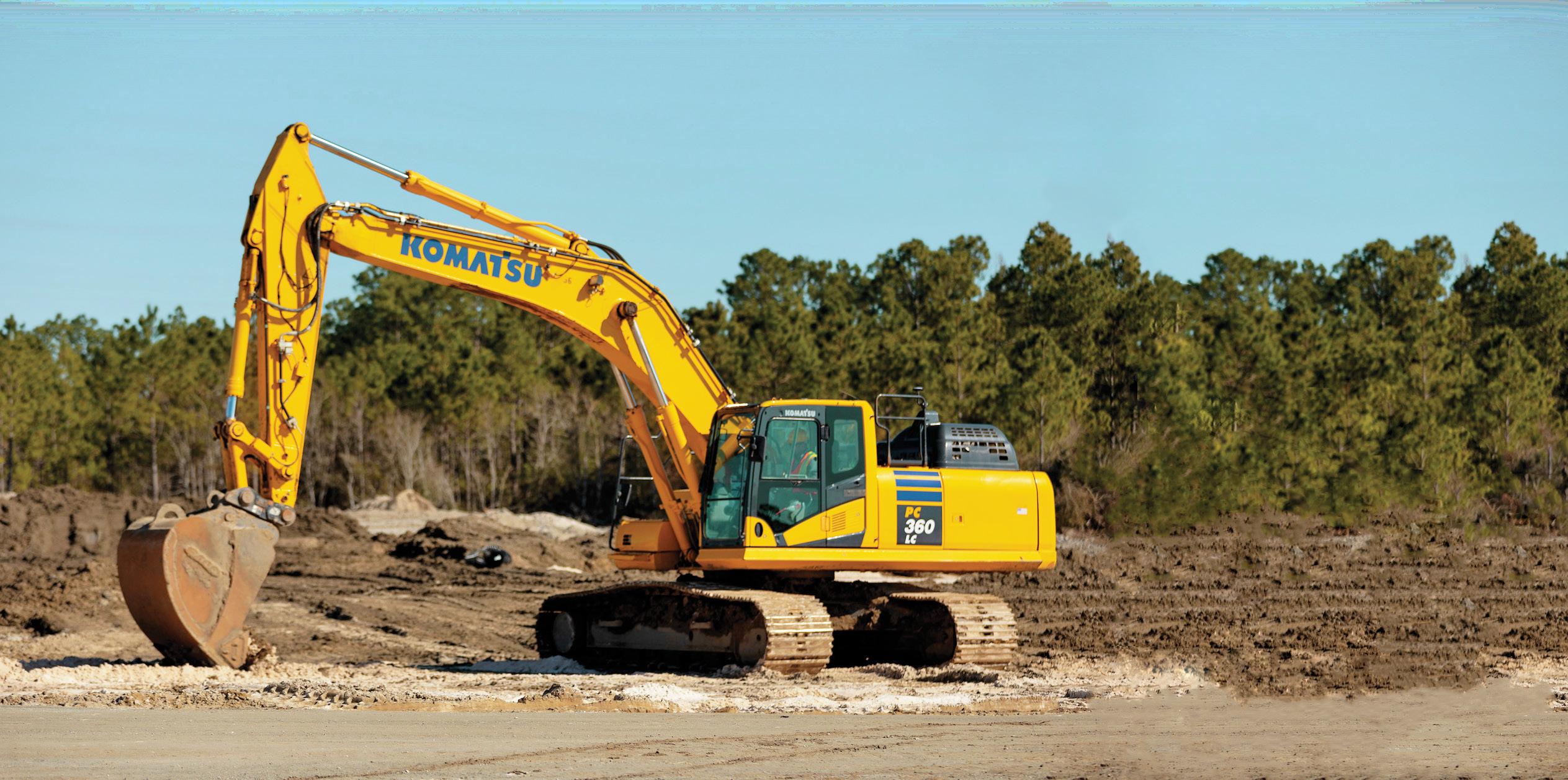
“As you load the bucket, it weighs the material, and operators see that in real time,” said Schwieters. “If you’re loading trucks, that helps ensure you are putting the proper amount of tonnage in and not overloading or underloading. Typical aftermarket systems don’t offer that. It’s a great feature for quarries, batch plants and construction projects to accurately monitor materials loaded onto trucks.”
To remotely track progress, that information and production data can be sent to project managers and other stakeholders using other Smart Construction solutions. Design changes can be sent to the machine using the cloud.
“The Smart Construction Retrofit Kit can be used with practically any brand or size of construction excavator,” Schwieters noted. “Installation can be done easily by your distributor or dealer. We recommend you contact them for more information about this valuable solution.” ■
The Smart Construction Retrofit Kit gives customers who want an entry-level, indicate-only system a solid choice. It is three-dimensional, so operators get the advantage of seeing where they are in relation to target elevation, and the payload system is an added bonus.
Ron Schwieters, senior product manager, iMC and hardware, Komatsu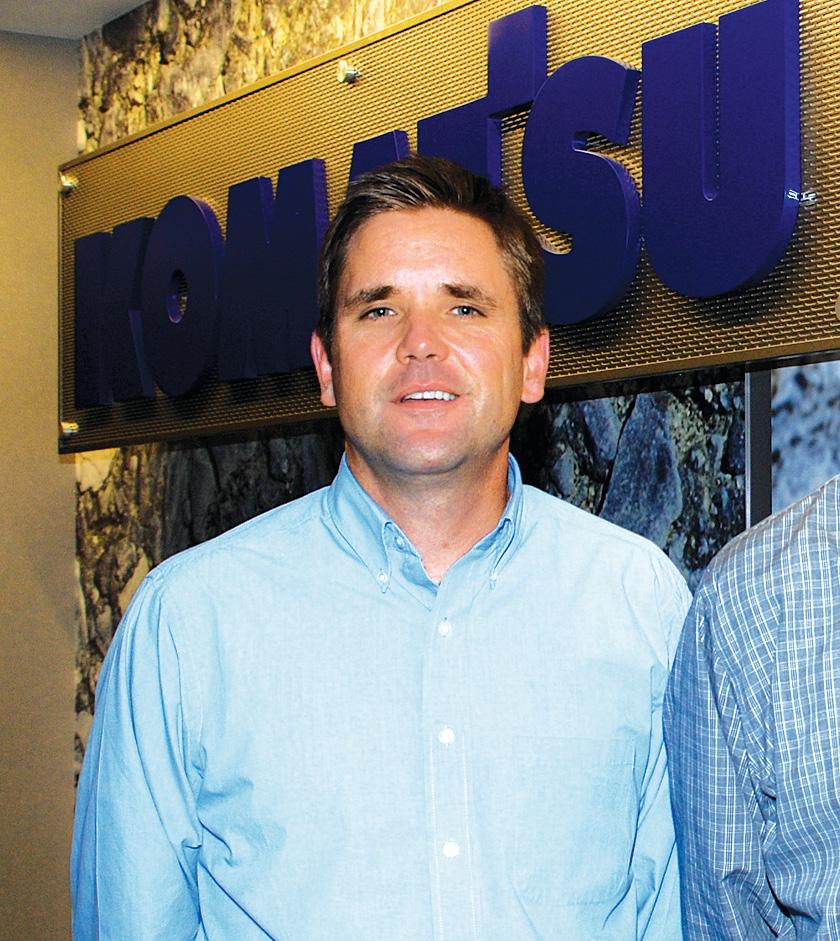
How to integrate tech to overcome job site challenges
JJob site challenges are nothing new, but today’s technology lets you overcome them more quickly. Whether by providing real-time data, tracking productivity, or helping you remotely visualize a job site, implementing some of the latest equipment and management technology can help you advance solutions like never before.
Start Smart
Construction has increasingly become more digital. Building information modeling (BIM) allows various stakeholders to collaborate throughout the course of a project using a 3D model of a site or structure. All parties involved — engineers, architects, contractors and their personnel, and project owners — have access to the digital plans. Everyone can see and track progress, and make updates much more quickly than in the old days with paper plans, job site visits and phone calls.
That’s a definite advantage for project managers who may be overseeing multiple jobs and can’t always get to those sites but still need reliable, accurate data and the ability to communicate design changes quickly.
Komatsu already has a suite of Smart Construction customer support solutions designed to help companies digitally
transform their operations throughout every phase of a project. Among them is Smart Construction Drone, which provides survey technology that builds an accurate topography of a site safely, quickly and easily.
“High-precision drone mapping is faster than traditional surveys, so you save time and costs,” said Jason Anetsberger, director of customer solutions, Komatsu. “Preconstruction flyovers let you see things you can’t with paper plans. Consistent drone flights throughout a project give you information about progress across the entire site and assist with progress tracking.”
Anetsberger added that Komatsu’s Smart Construction experts can work with you to get a 3D model built and help with drone flight.

“Using Smart Construction Dashboard, you can calculate takeoff quantities for bids, move from 2D to 3D for optimized machine data, and eliminate the need for paper plans,” said Anetsberger. “The 3D design plans can be uploaded directly into Komatsu’s Smart Construction intelligent Machine Control (iMC) excavators and dozers with the use of Smart Construction Remote, including new iMC 2.0 models that have technology upgrades to further automate earthmoving operations.”
A lack of skilled operators is a huge challenge for earthmoving companies right now, but with automation, new operators can become productive faster. Komatsu intelligent Machine Control (iMC) dozers with automated features enable operators to cut/strip from existing terrain, regardless of skill level. The ability to use automatics from first pass to last, instead of just during finish grading, significantly reduces the time it takes to reach target elevation.
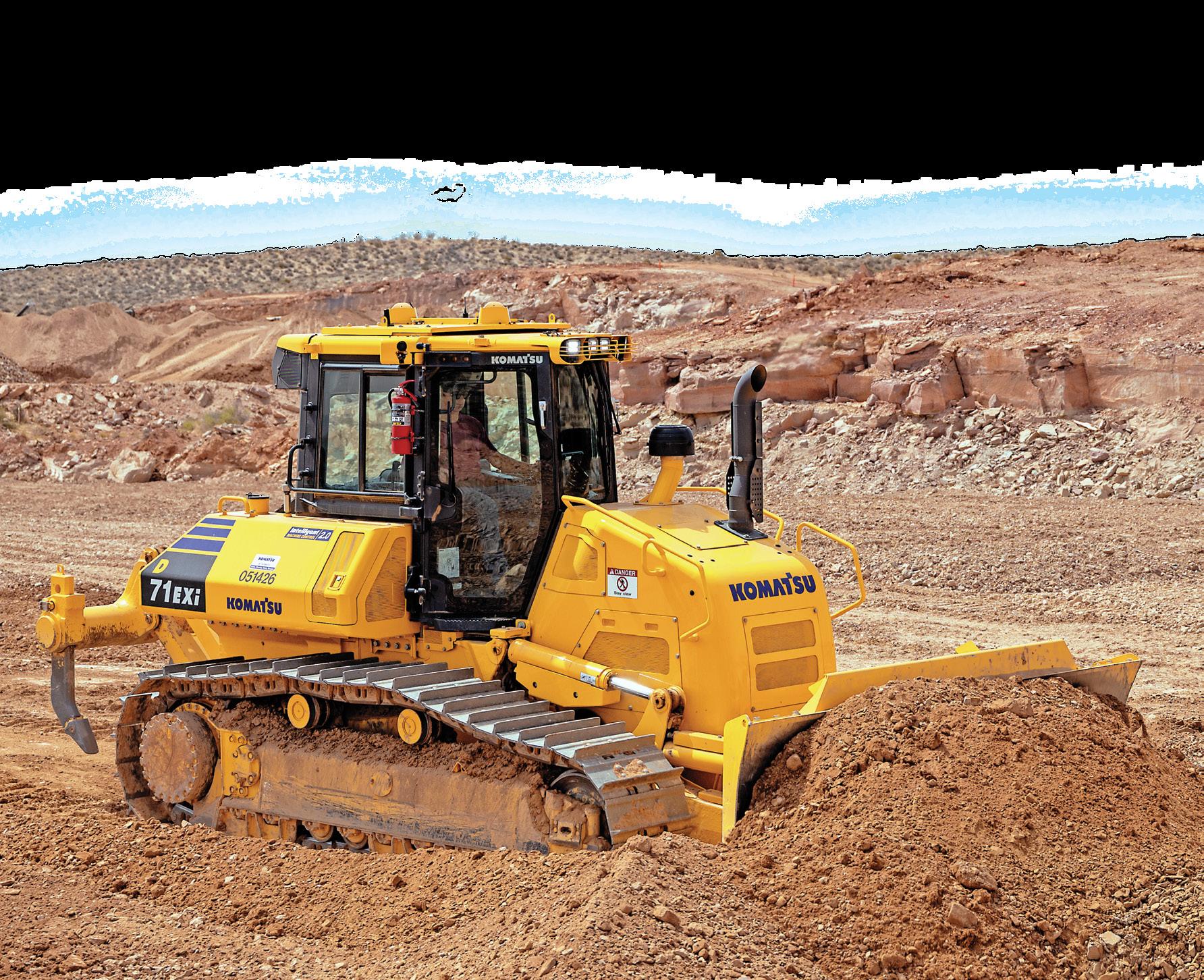
Accurate slope digs and changes in elevation present challenges for excavators. Komatsu iMC 2.0 excavators let you dig straight to grade using one machine with integrated GPS and uploaded 3D data models. The latest generation (PC210LCi-11, PC290LCi-11, PC360LCi-11 and PC390LCi-11) can help improve production by up to 33% and efficiency as much as 63% compared to conventional excavation and grading methods.
Automate dozing

A lack of skilled operators is a huge challenge for earthmoving companies right now, but with automation, new operators can become productive faster. The ability to use automatics from first pass to last, instead of just during finish grading, significantly reduces the time it takes to reach target elevation.
Komatsu’s iMC 2.0 dozers with integrated GPS feature proactive dozing control that enables operators to cut/strip from existing terrain, regardless of their experience level. This is because the machine’s GPS technology decides on the action of the blade, such as whether to cut and carry, spread, fill or finish grade. The dozer measures the terrain as operators track over it and then uses the data to plan the next pass — which can improve productivity by up to 60% compared to the previous generation.
The iMC 2.0 dozers have additional technology features:
• Lift layer control helps eliminate excess fill as the automatic blade control follows the finished surface once lifts have reached target elevation. A simple press of a button optimizes earthwork productivity.
• Tilt steering control automatically tilts the blade to maintain straight travel during rough dozing and reduces operator steering input by up to 80%.
• Quick surface creation lets operators create a temporary design surface with the press of a button. Combined with iMC 2.0 functions, crews can begin stripping or spreading using automated input while waiting for the finish grade model.
Virtually eliminate over-excavation
For construction companies, over-excavation on trench, footing and basement digs have long been an issue. This leads to extra work and more costly materials to replace what didn’t need to be removed in the first place.
Accurate slope digs and changes in elevation also present challenges. Those are costly in terms of time, surveying, staking, grade checking, and the need for multiple machines such as an excavator to get close to grade and a dozer to finish.
For more information about Smart Construction solutions, My Komatsu, Komtrax, and iMC 2.0 dozers and excavators, contact your local Linder Industrial Machinery Company representative and visit www.komatsu.com
Contractors can significantly reduce such costs using Komatsu iMC 2.0 excavators, because they can dig straight to grade using one machine with integrated GPS and uploaded Continued . . .
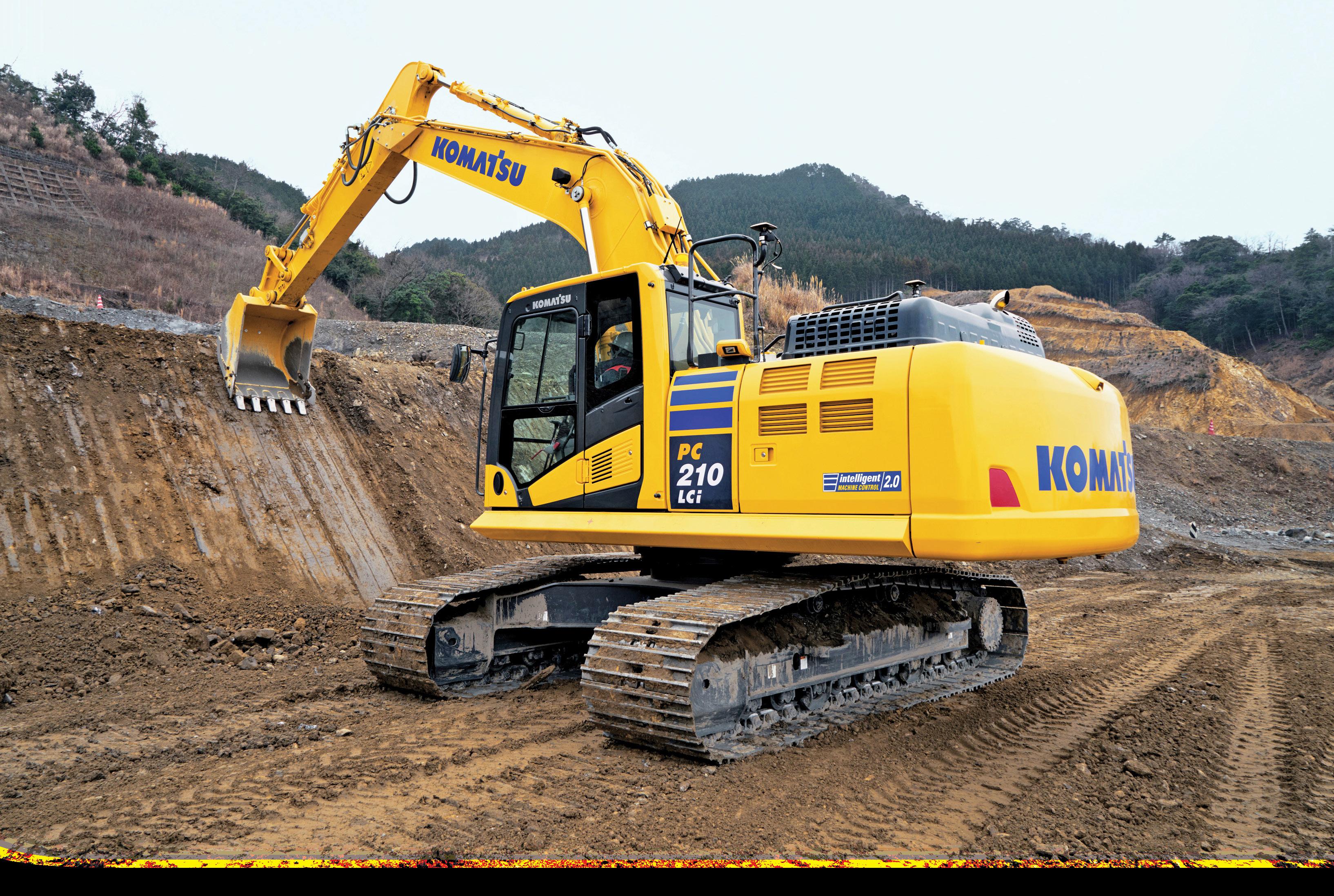
Reduce costs with Komatsu iMC 2.0 excavators
3D data models. The latest generation (PC210LCi-11, PC290LCi-11, PC360LCi-11 and PC390LCi-11) can help improve production by up to 33% and efficiency as much as 63% compared to conventional excavation and grading methods.
an issue with their machine or a question on the digital plans, Smart Construction Remote lets GPS managers and project managers connect with the machine and see exactly what the operator does on their monitor. That eliminates a trip, saving time and money.”
Editor’s Note: This article is excerpted from a longer piece that appears on Komatsu’s blog. To read the full article, visit https://www.komatsu. com/blog/2022/ how-to-integrate-techto-overcome-job-sitechallenges/.
Komatsu iMC 2.0 excavators have unique features such as auto tilt bucket control that automatically aligns the bucket parallel with a slope, so finish grading can be accomplished without needing to align the machine with the target surface.
Another feature is bucket angle hold control, which helps operators reach finish grade quickly and accurately because it automatically holds the bucket angle to the design surface during arm operation, enabling operators to perform finish grading using only arm input.
Remotely exchange information
Because job sites often evolve and rarely end up finishing exactly as planned, smart businesses are increasingly performing the task of updating plans digitally and remotely with technology such as Smart Construction Remote
Now, you no longer have to travel to the job site with a USB drive. You can send updates directly to connected iMC machines and field personnel from practically anywhere.
“You can also remotely support operators,” said Anetsberger. “If they have

Getting updates from the job site is also more convenient with Smart Construction Field, which can eliminate the wait for phone calls or field personnel to drop off information. It allows you to digitally track job site activities as well as aggregate personnel, machine and material costs to compare progress status in terms of schedule and costs.
See your fleet data anytime, anywhere
Fleet managers know the challenges of getting the information they need to maintain machinery and make important decisions related to service. What if all the utilization data, parts ordering capabilities, service manuals and more were available in one platform?
“My Komatsu enables users to access and evaluate their assets,” said Komatsu’s Gabe Saenz, digital experience manager. “It can save countless hours of trying to track down machine information and help you be more proactive about service and repairs, when to order parts, and other critical factors related to fleet management.” ■
Job sites evolve, and plans change. Instead of driving to the site to deliver updates, you can send design changes directly to connected iMC machines with Smart Construction Remote. Fleet managers can also remotely support operators and see exactly what they see on the monitor in their machine.



How to prepare for extreme weather events to help keep workers, property safe
Editor’s Note: This article is excerpted from a longer blog. To read it in its entirety, visit https://www. komatsu.com/en/ blog/2022/extremeweather-is-predictedare-you-prepared/.
SSevere weather and natural disasters can strike anytime. Whether from climate change, natural weather patterns or other causes, their frequency has increased during the past two decades. Now more than ever, it’s essential to be prepared and have plans in place that protect staff members and your valuable business assets in the event of extreme weather and/or natural disasters. Here are some tips for putting a good plan together.
Create an emergency response plan
Preplanning is a main factor in successful project completion, and it’s also essential for responding to emergency situations, according to Troy Tepp, director of safety services with Sentry Insurance.
“Predicting when those events will occur is nearly impossible, and that’s why it’s essential to be prepared with response plans,” said Tepp during a webinar for the Associated Equipment Distributors titled “Developing Your Emergency Response & Recovery Plans – Before They’re Needed.” “Thoughtful preplanning that addresses potential scenarios is vital.”
As a starting point, Tepp suggested establishing goals and priorities.
“The top priority within any emergency response plan must be developing procedures that prioritize the protection of lives and the safety of your staff, customers and any other visitors to your facilities. Keep in mind, your procedures also need to account for employees outside of your fixed-base operations, such as field personnel, drivers and equipment operators.”

In Jacksonville, Texas, WHM Construction Inc. uses technology to help protect personnel from severe weather.
“Watching the weather is essential because it can affect everything we do, but keeping our staff safe is of utmost importance,” said Justin Holman, vice president. “We prepare by having apps on our smartphones that alert us if severe weather is imminent. If that’s the case, everyone is instructed to get out of harm’s way as safely and quickly as possible. After it’s passed, we assess the situation and determine our next course of action.”

Prioritize for your area(s)
There are apps for smartphones and tablets that can give workers the ability to track weather and plan for potential emergency situations.
Natural events such as tornadoes, fires, severe storms, hurricanes, ice and snow, and earthquakes are all considerations for weather plans. Prioritize those that are most prevalent and likely to occur in your area.
Tepp used a tornado as an example of how to align risk assessment with planning and awareness and stated, “If that is one of your foreseeable emergencies, begin to create a plan by identifying the alarms and alerts that identify those events. Then, you develop action that mitigates the risk, such as designating a shelter or shelters. You will also want to clearly identify them as such with signage, and train staff to know where shelters are located and that they should immediately proceed to the shelters if they hear the alarms. You also need to designate and train staff members to assist those with special needs. If personnel are off-site, have a communication plan to check on their safety and well-being.”
When designing your response procedures, make sure they are specific. They should define roles and responsibilities as well as activate an assigned response team.
Kort Wittich, owner of Kort’s Construction Services Inc. in Covington, La., knows that preparation for multiple scenarios is essential.
“We have a couple of major considerations in this region,” said Wittich, who provides a diversified list of site construction offerings, mainly in the New Orleans metro area. “One is thunderstorms. We keep our eyes and ears open to the television and radio stations for forecasts and updates and base decisions from those, as well as looking at radar on our phones and watching the sky. If we determine that severe weather is coming, we pull personnel off-site, so they can get to safety.
“Unfortunately, hurricanes come with the territory, but unlike thunderstorms, which can pop up anytime, you generally have a few to several days’ notice before a hurricane,” said Wittich. “That gives us time to move assets out of areas where they may potentially be damaged and get them to a more secure location. Our goal is to do that in a safe manner as quickly as possible, so our staff also has time to prepare their homes and families.”
Blue Mountain Minerals also faces multiple scenarios at its limestone quarry in Columbia, Calif., including fires.
“Like anyplace that’s surrounded by timber and mountains, wildfires are more prevalent,”
added Richard Stringham, plant manager. “We had one across the lake adjacent to our property last year, and we had to evacuate. Our plans definitely include that situation. We have roads besides our main road that lead out of the site for us to exit. Being in Northern California, there is less of a chance of an earthquake than in the southern part of the state, but the possibility is always there, so we are prepared for that too.”
Communication remains key
To prepare effectively, create a business-recovery plan. According to Tepp, the plan should designate a pre-assigned business-recovery team.
Other elements of the plan should include determining essential staff versus support staff, outlining IT needs, looking at communication considerations, preparing daily progress updates and phased recovery, testing, and training.
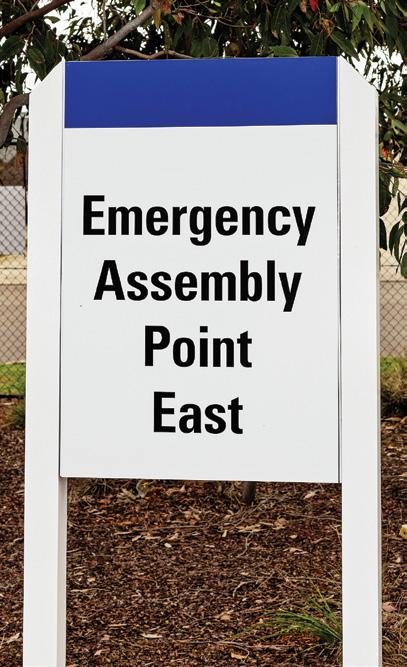
“Reporting the incident to your insurance carrier in a timely manner should be your first step [after an incident has occurred],” said Tepp. “The faster it’s reported, the quicker an investigation can occur, and reimbursements can be made. Your team will oversee successful recovery by putting the plans in place that you developed to deal with emergency events.” ■
If a weather event hits your business during work hours, there should be designated areas for workers to report to.
 Severe weather such as thunderstorms can happen anywhere and at any time of the year. Having emergency plans and procedures in place can protect lives and property.
Severe weather such as thunderstorms can happen anywhere and at any time of the year. Having emergency plans and procedures in place can protect lives and property.
Showcase
World of Asphalt’s record number of attendees see machinery and technology designed for maximum paving, aggregate production
MMore than 11,000 people attended World of Asphalt 2022, breaking its previous attendance record. Industry professionals gathered at the sold-out Music City Center in Nashville to see equipment, meet old and new friends, and participate in educational sessions.
Komatsu featured multiple products during the three-day event, including a standard WA475-10 wheel loader and the yard loader version of the WA475-10 that features an added counterweight, a larger bore bucket cylinder and low-profile tires.

braking system maximizes brake life in load-and-carry applications.”
Breakers to match applications
Komatsu also showcased some of its breakers at World of Asphalt, including the 4,035-pound hydraulic JTHB210G that delivers 4,500 pounds of impact and pairs with excavators ranging from 18 tons to 25 tons.
visit www.komatsu.com
“The WA475-10 yard loader is great for moving loose or crushed material in applications such as charging an asphalt plant or loading out highway trucks,” said Bruce Boebel, senior product manager for wheeled products, Komatsu. “The larger bucket cylinder and counterweight allow it to handle a larger bucket, so users get the benefit of moving more material faster. In addition to asphalt plants, it’s great for work in cement batch plants, small quarries and operations that involve wood chips or mulch.
“With the Komatsu Hydraulic Mechanical Transmission (KHMT), the learning curve to operate the loader is much faster, which is great if you have less experienced operators,” added Boebel. “You use only one pedal for most of the operation. You press it to go faster, and when you release it, the loader’s dynamic braking automatically slows the machine down. The air-cooled
“The advantage of the JTHB210 is its simple design and low ownership costs,” said Aaron Scarfia, regional manager, Komatsu North America Attachment Division. "It will withstand wear and tear in tough rock and concrete breaking applications.”
Also on display was the fully variable JMHB230V breaker that works on excavators ranging from 18 tons to 35 tons. Scarfia said if you have a mixture of soft and hard rock, the JMHB230V with 5,000 pounds of impact force is likely the best choice.
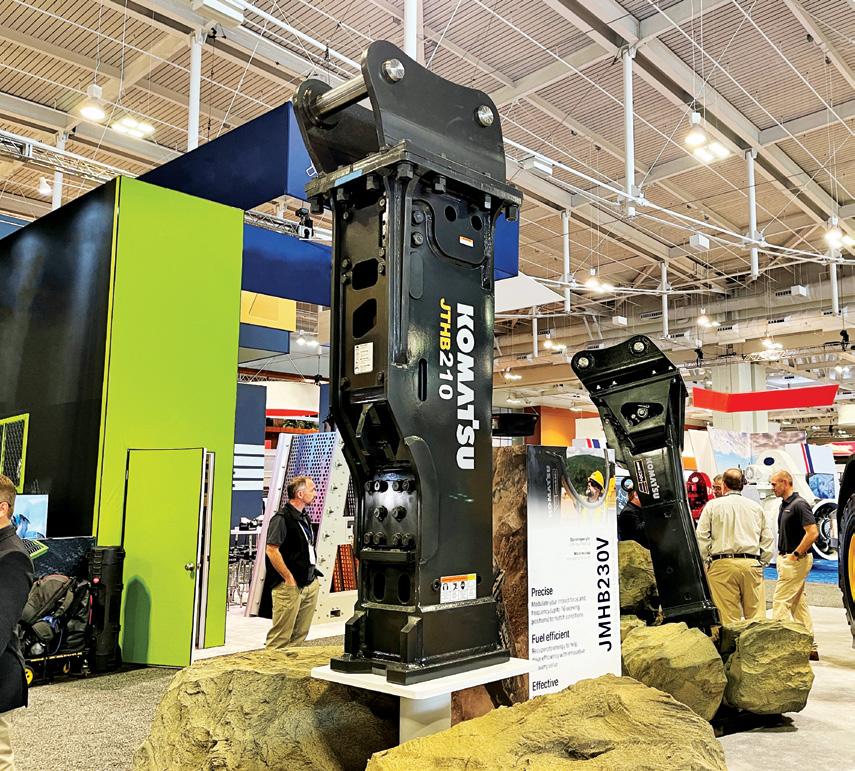
“It’s lighter weight, but delivers greater impact force,” said Scarfia. “One of its greatest strengths is that it detects material hardness and automatically shifts the strike piston to match. It also helps reduce blank firing.
“We encourage anyone who does material breaking, whether in a quarry, on street and highway removal, or demolition, to consider a breaker,” added Scarfia. “We have a broad size range to match machines and applications, and our dealers can help you determine which will be the most productive and efficient.” ■

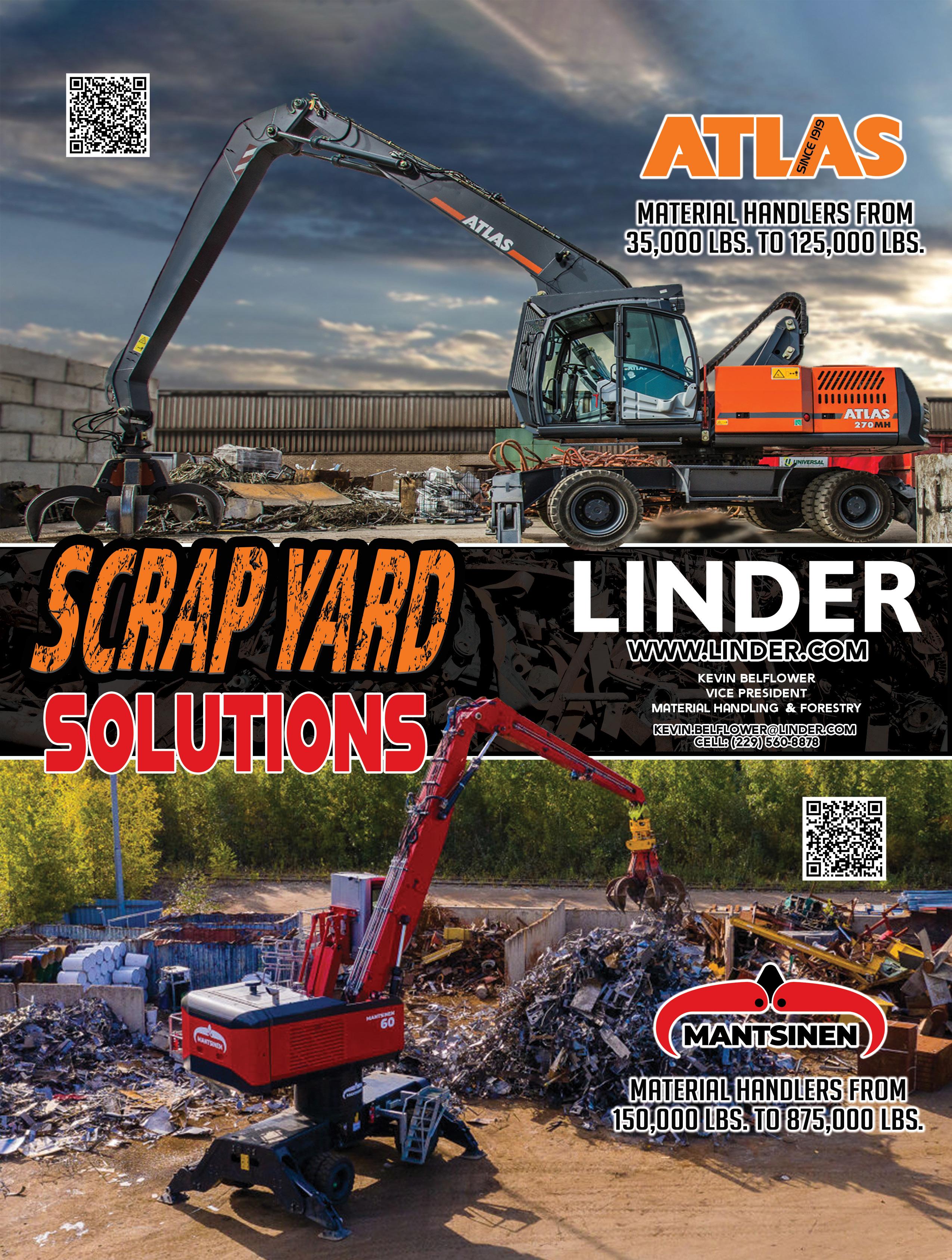


Improved Fleet Management
Get impactful visual analyses of telematics data from your mixed fleet in one convenient location with My Komatsu
Simple steps to add non-Komatsu machines to My Komatsu
1. Get credentials from your OEM representative
Log into your My Komatsu account
Click on t he My Fleet page
Michael Carranza, manager, digital experience, Komatsu

Enter your credentials under Manage
OEM
Test the connection
your mixed fleet
“The information will show up the next morning, and you can start collecting data and utilizing the benefits of having all that key information in My Komatsu,” said Komatsu’s Michael Carranza, manager, digital experience.
My Komatsu now lets you access telematics data from Komatsu and non-Komatsu machines. “There are up to 25 key data points available such as location, hours, fuel consumption, idle time and production,” said Komatsu's Michael Carranza, manager, digital experience.

TTo get the most value from your telematics data, you need an efficient way to interpret it. What if you could monitor the health of your entire mixed-equipment fleet from one dashboard, receive maintenance alerts on your phone, and order parts without searching through manuals?
With Komatsu’s comprehensive digital hub, My Komatsu, you get easy-to-interpret visual analyses of data collected from numerous sources displayed on easy-to-read dashboards. My Komatsu can pull data from Komtrax and ISO API 15143-3 (AEMP 2.0) data from other OEMs (original equipment manufacturers). It can also provide powerful analytics to help you manage your fleet and drive your business without managing multiple IDs and passwords.
The system has been designed to make it easy to collect, visualize and monitor telematics data from Komatsu and non-Komatsu machines.
You can:
• Quickly view and manage data on one dashboard
• Receive maintenance alerts and order parts
• Troubleshoot to help minimize downtime
• Monitor for theft and unauthorized use
• Benchmark machine performance
• Track fuel consumption and manage fuel efficiency
Access data anytime
“This allows customers to add telematics data from any manufacturer who is compliant with the ISO standard and see all their assets in one convenient place,” said Komatsu’s Michael Carranza, manager, digital experience. “There are up to 25 key data points available such as location, hours, fuel consumption, idle time and production. My Komatsu is complimentary and so is access to this valuable data from other OEMs through My Komatsu. We recommend contacting your Komatsu dealer for assistance.”





WORK
The


relies on
while

mean
WITH TRACK

Darrell Westmoreland Owner
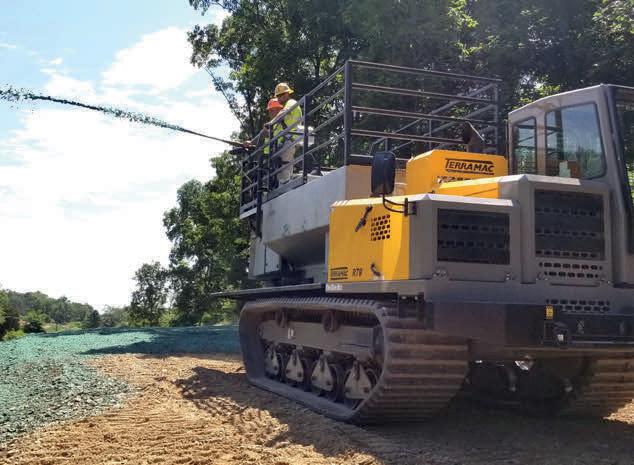
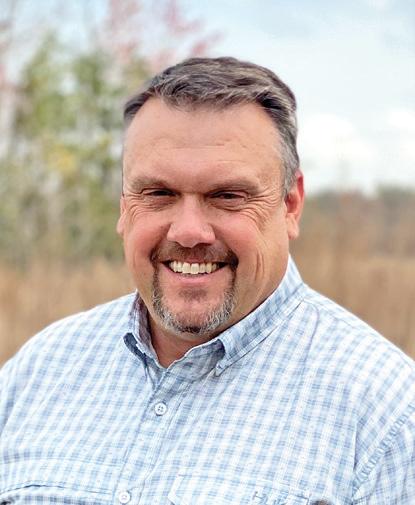
North State Environmental

and
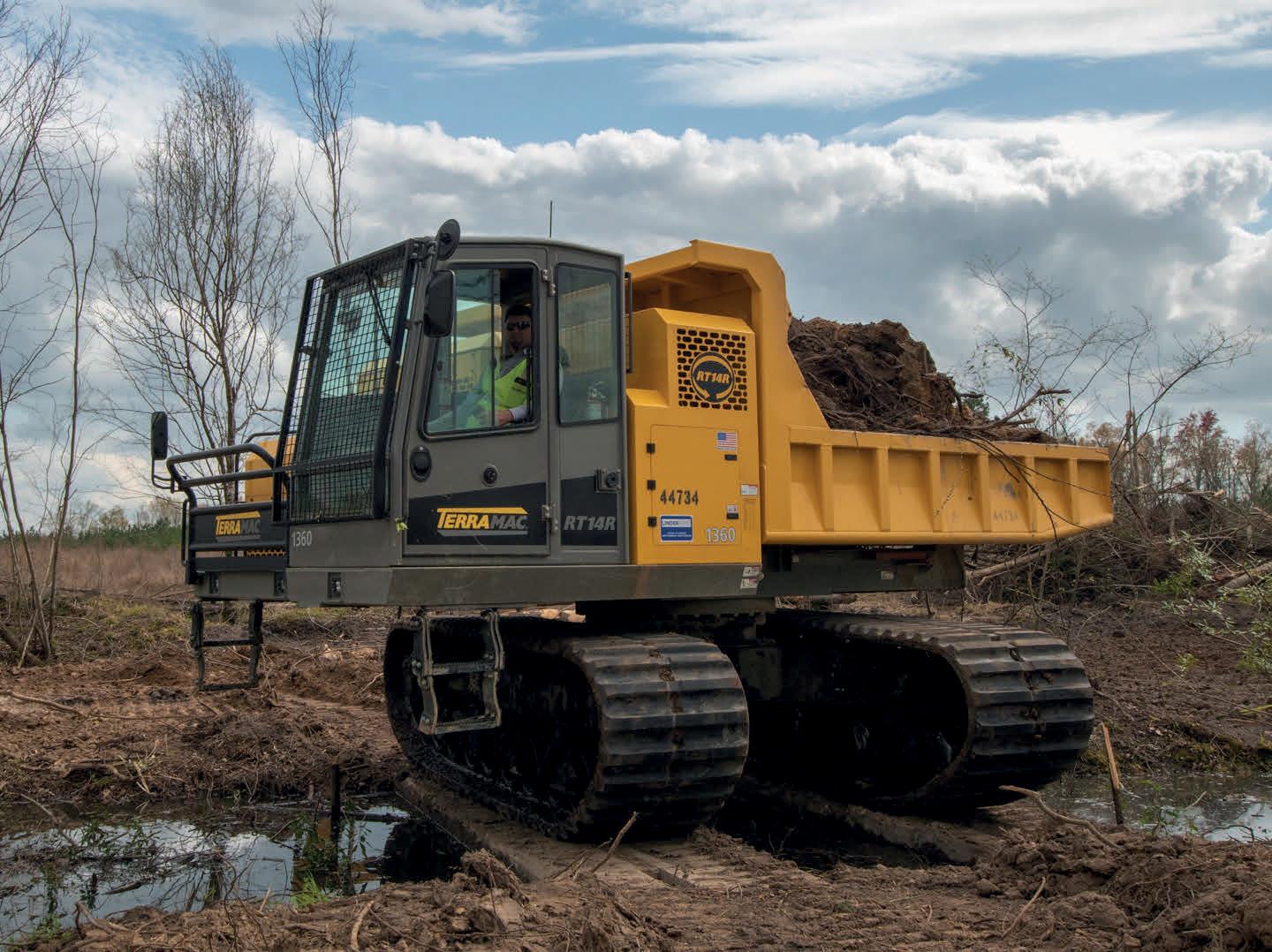
Tips
Precise control for the perfect crown
AA 2D cross slope system on a motor grader allows operators to control the slope angle more easily for the entire length of the moldboard while effortlessly adjusting on the fly. That’s why the system is a standard feature on Komatsu GD655-7 motor graders.
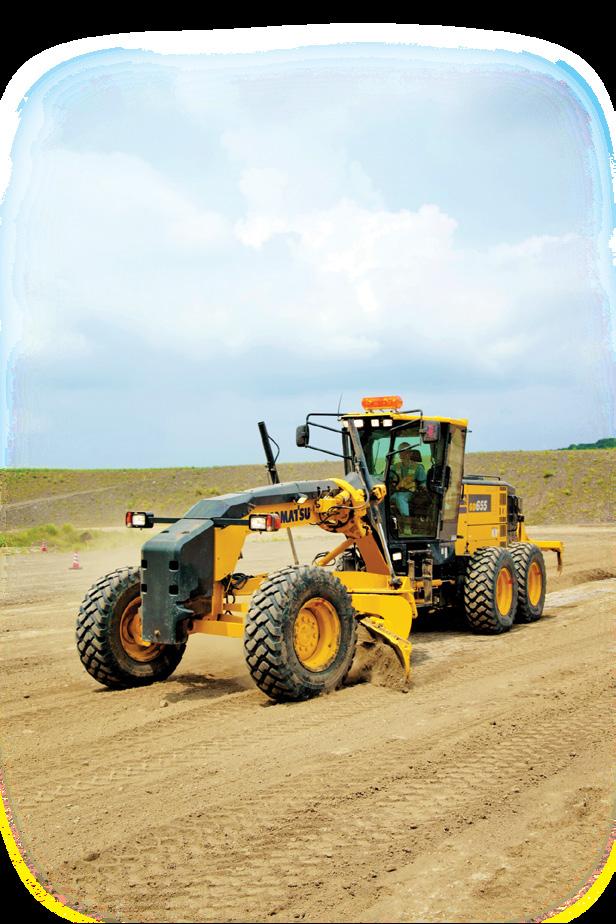
The operator controls the height of the moldboard by adjusting just one end while the 2D system automatically maintains the desired cross slope angle. This allows operators to focus more on the leading or trailing end of the blade and the machine’s travel path. Automatic or manual mode can be set for either end of the moldboard.
With the 2D cross slope system, operator fatigue and stress can be reduced when making
precision passes. The system also allows for quick slope angle when cutting road crowns and shoulders. It works even if the machine is articulated and does not require daily recalibration.
Insider Tip: “The memory presets and the slope match features make it easy for the operator to quickly maintain slope angle when returning in the opposite direction,” said Nathan Repp, product marketing manager, Komatsu. “One of the memory presets could be a mirror angle setting, and the slope match setting means that the operator can set the blade on an existing slope and use it as the base setting for the moldboard cross slope angle.” ■
Genuine batteries for proven performance
IIf you’re looking for a battery that’s proven to perform under nearly all circumstances, Komatsu recommends its genuine Komatsu batteries for its machines. They undergo numerous quality-control checks and are manufactured to stand up to challenging conditions.
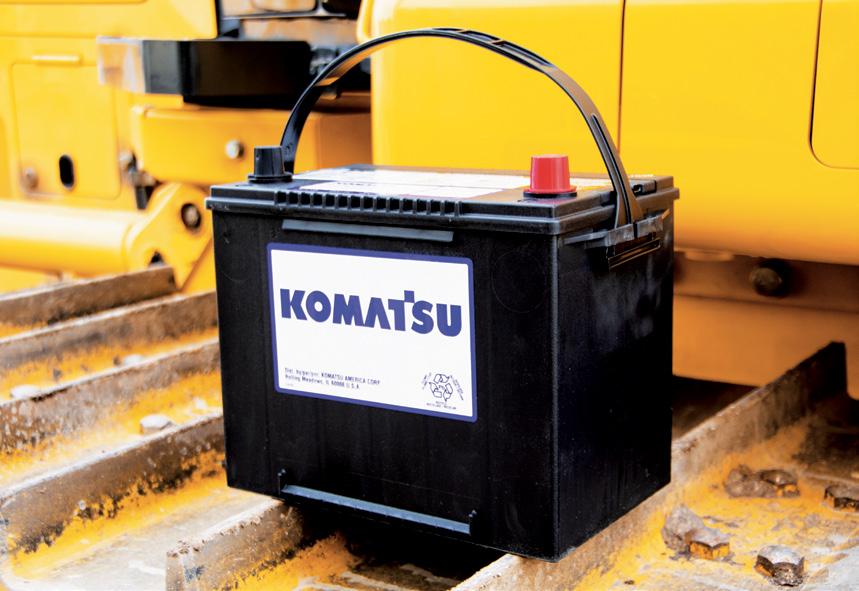
With proper maintenance, Komatsu batteries typically last three years or longer — even under rigorous demands. A wide range of 6- and 12-volt sizes are available, as well as less common types through Linder Industrial Machinery Company. Komatsu supports all batteries with its standard parts’ warranty, which is one or two years depending on the part number.
Insider Tip: “If you think Komatsu genuine batteries are great in our machines, consider them for other uses,” said Komatsu’s Veronica
Vargas, product manager, parts. “They also power class 1 through class 8 on-highway trucks, boats, RVs, power sports products, golf carts and more.” ■
Want to extend your PC360LC-10’s service life?
RRemanufactured engines can provide significant up-front cost savings compared to new ones. A Komatsu Genuine Reman engine also helps maximize the life of your equipment.
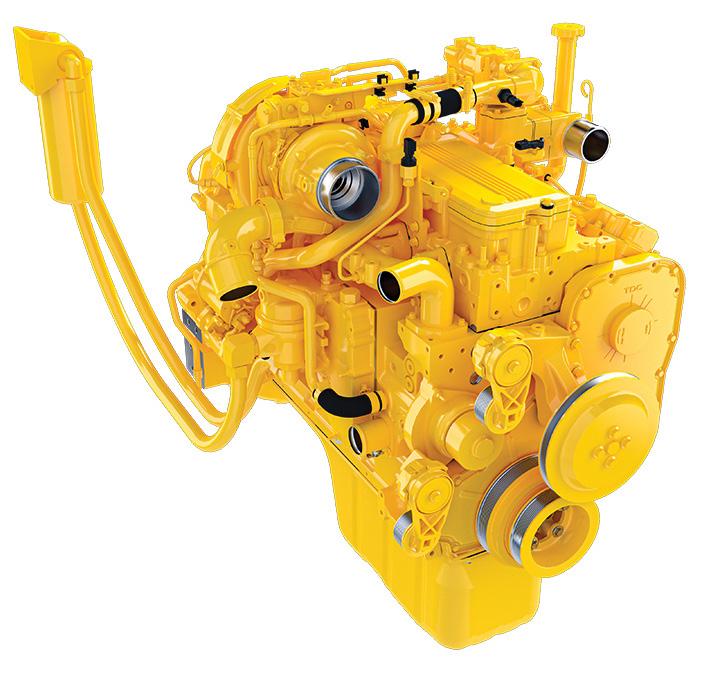
Komatsu now offers a completely remanufactured engine for its popular PC360LC-10 excavator. This valuable option comes with a standard one-year, unlimited-hours warranty. A four-year, 10,000-hour Komatsu Genuine Reman
Component Quality Assurance warranty is also available.
Insider Tip: “This is a fully remanufactured engine designed specifically to fit in the PC360LC-10,” said Komatsu’s Goran Zeravica, senior product manager for reman. “It is available by contacting your local Komatsu distributor, and we recommend installation by their highly skilled and trained technicians.”


Linder Employee Focus
Travis Mullins promoted to chief operating officer

LLinder Industrial Machinery Company recently promoted Travis Mullins to chief operating officer. Mullins grew up on a farm in Oklahoma where he learned to operate heavy equipment. After working on a pipeline crew for several years, he transitioned into a sales role and eventually into a branch manager position for an equipment rental corporation. He then became a service manager at Komatsu Equipment Company and worked his way up to vice president of operations before accepting a position with Linder. “About six years ago, Linder called and offered me a position as vice president of service,” recalled Mullins. “I spent four and a half years in that role before transitioning into vice president of product support for one year, and most recently accepted a position as COO on April 1. I’ve been able to grow within Linder because of my experience working both sides of the customer-experience fence.”
As COO, Mullins oversees the sales, rentals, parts and service departments. He plans to continue finding ways each department can best service Linder’s customers.
“I try to merge the knowledge from my experience as a customer purchasing equipment with my corporate sales and service knowledge to provide our customers the best support to meet their needs,” said Mullins. “We will continue to focus on growing our after-sales support, which includes training for our product support reps in the field, our technicians and our parts counter people. Linder’s employees are its best assets — without them, we wouldn’t be able to take care of our customers.”
Mullins and his wife of 22 years, TJ, have two children, Ava and Mitch. The family enjoys spending time together outdoors. You can typically find Mullins and his family fishing on a boat. ■
Controller Lindsey Semko aims to improve processes, better serve customers

LLindsey Semko holds one of the most important positions at Linder Industrial Machinery Company. After earning her bachelor’s degree in finance from Southeastern University and a master’s degree in business administration with a concentration in accounting from Keller Graduate School of Management, Semko entered the corporate accounting world. In 2017, Linder hired Semko as a fixed asset accountant. After two years, Semko was promoted to senior accountant. Semko became a Certified Management Accountant (CMA) while working at Linder and was promoted to controller last fall.
“The controller is the head of the accounting department,” Semko clarified. “I know most people prefer to stay away from numbers and accounting, but I love the work that I do. I enjoy coming into the office and seeing everybody that I work with as well. Not everybody can say that.
“I see the accounting department as an asset to every division of Linder,”
continued Semko. “Every other function of the company interacts with us in some way. When we do our job efficiently, we’re able to help the company serve its customers better and be more profitable.”
Semko sets high goals for herself and the department.
“As Linder’s business continues to grow, we’re looking for ways to automate processes and take advantage of today’s technology,” noted Semko. “We have several projects in the works to improve our accounting systems so that our people can better focus on our core business, which is taking care of customers.”
Semko has been married to her husband, Chris, for 15 years. They have two children and are involved at their church. When not working, Semko can usually be found shuttling her children between sporting activities and other family events. ■
Travis Mullins, COOLinder Employee Focus
Vernon Williams enjoys helping customers understand and utilize technology
GGrowing up, Vernon Williams spent a lot of time on computers and playing video games. After earning an engineering degree from Virginia Commonwealth University (VCU) in 2012, he accepted a position as a technology solutions expert (TSE) apprentice for a Komatsu dealer in Virginia. When a TSE position opened at Linder Industrial Machinery Company, Williams eagerly applied for the role. In May, Williams was promoted to technology solutions field operations manager.
“Becoming a TSE felt like a natural progression from video games and computers because it combined working with some of the most advanced technology in the industry and finding solutions for customers,” said Williams.
“At the time, Linder was known as the number one iMC (intelligent Machine Control) dealer in the U.S. When the TSE role opened up in Raleigh, I wanted to be a part of Linder’s culture to help their customers understand how Smart Construction would positively impact their business.
“Early in my career, my goals were to gain a deep understanding of everything we could offer our customers from a technology standpoint and feel confident explaining to them how each component worked,” continued Williams. “As technology evolved from aftermarket bolt-on GPS systems to fully integrated iMC technology, the scope of what we could offer increased. Today, I want to expand our customers’ understanding of Smart Construction and how a smart job site increases productivity. I enjoy being the bridge between curiosity and solution.”
In his new role, Williams works closely with Linder’s team of TSEs to provide operational support throughout Florida, North Carolina and South Carolina.
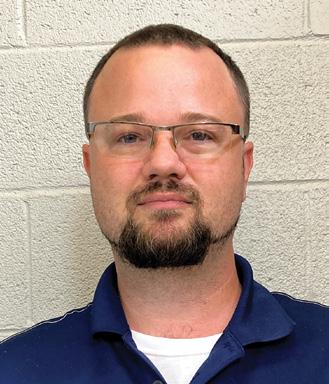
“I handle anything dealing with field operations,” stated Williams. “For instance, aftermarket installations, customer support on the iMC machines, base and rover sales — there’s a lot that falls under my umbrella. A majority of my time will be spent training our TSEs to perform their jobs efficiently and continue building their base of knowledge.”
Ultimately, Williams’ goal is to teach customers about the capabilities of Komatsu iMC machines.
“First, we want them to envision different ways they can utilize the technology,” explained Williams. “Then, we’ll show them how it increases operator productivity and efficiency through training. At the end of the day, we want the customer to see the value of the technology and how it can positively impact their bottom line.”
Quick tips
“One of the most common issues we have is folks having trouble getting machines connected to their base station to get the correctional data; 99% of the time it’s a radio setting issue where somebody changed the frequency without communicating that forward,” commented Williams. “We walk you through resetting the connection, and you’re running again in minutes.
“If you’re having accuracy issues, most of the time it’s not the Komatsu machine that’s inaccurate, it’s something you’re comparing the machine to,” explained Williams. “That usually leads to the question of how to actually use the automatics. Because the Komatsu iMC integrated machines offer more capabilities than aftermarket GPS systems, operators that are used to aftermarket systems often don’t realize they can run in automatics 90% to 95% of the time. Again, this is a great time to call your TSE and have them come out to your job site to teach your operators how the iMC technology can be maximally utilized.
“If you want to track how much time your operators spend in automatics, we can provide that data,” said Williams. “Through Komtrax, we can run ICT (information and communications technology) reports that detail not only idle hours and working hours of a machine, but it will tell you how much of that time was spent in automatics. This is really useful to tell which operators understand the capabilities, which are hesitant, and where you could increase your efficiency.”
Williams and his wife, Stephanie, have two sons, Trip and Xander. They enjoy spending their weekends going to the beach or camping in the mountains. In his free time, Williams does woodworking and collects watches. ■




